CHERNOBYL:
Overcoming the Past, Securing the Future
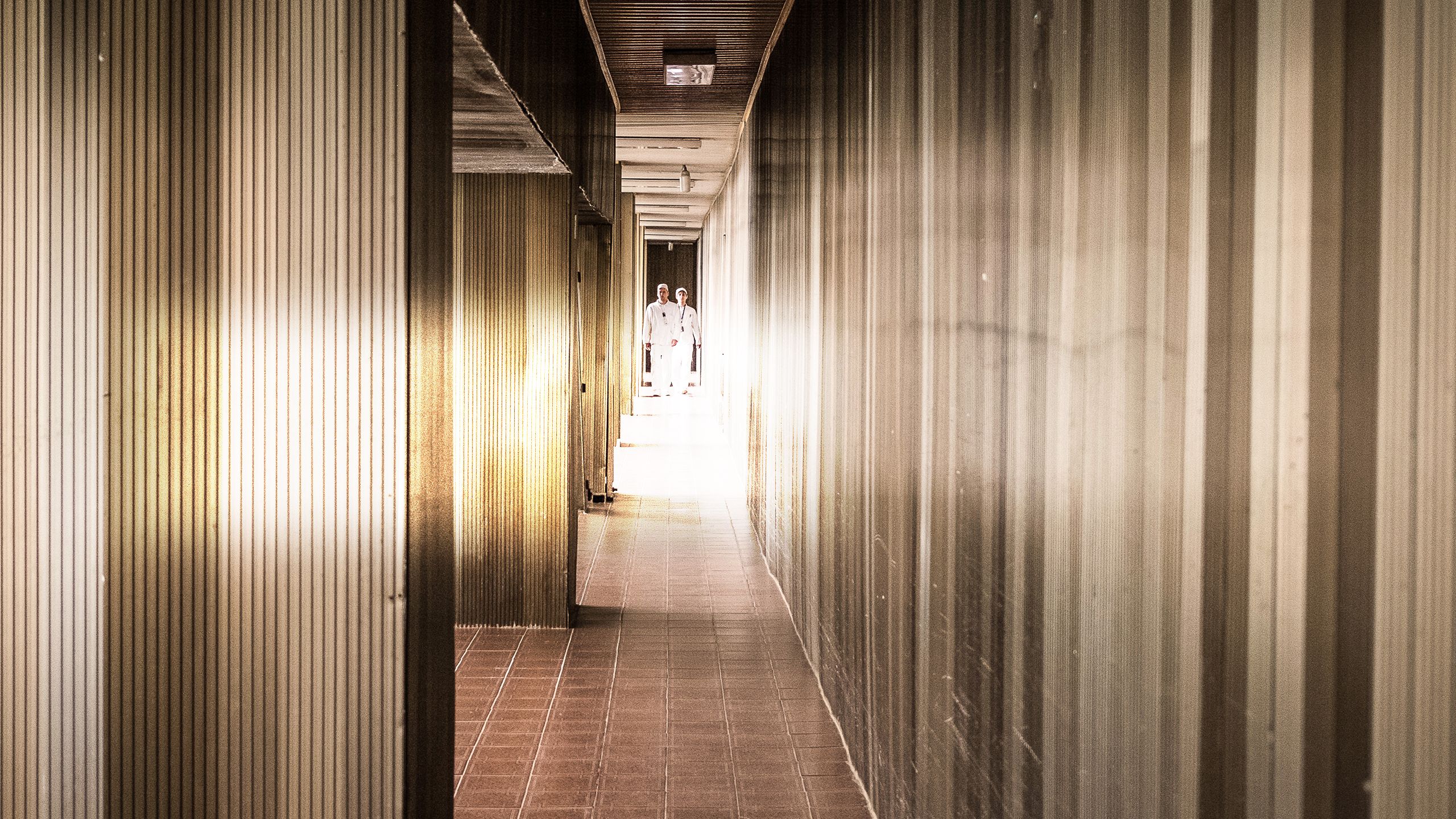
By Axel Reiserer and Chris Booth

THE ACCIDENT
At 01:23:40 on 26 April 1986 a failed test led to the explosion of reactor 4 at the Chernobyl Nuclear Power Plant in Ukraine, then part of the Soviet Union, and the release into the atmosphere of parts of the radioactive core.
The wind carried contaminated particles over Ukraine, Belarus and Russia as well as over parts of Scandinavia and wider Europe.
The accident not only cost human lives and caused enormous material damage; it also played a unique role in the demise of the Soviet Union.

“Chernobyl, even more than my launch of perestroika, was perhaps the real cause of the collapse of the Soviet Union five years later”, wrote the former Soviet leader Mikhail Gorbachev in his memoirs.
While the state propaganda machine compelled the people of Kiev to celebrate May Day only five days after the explosion, the almost 50,000 inhabitants of Pripyat, a town three kilometres away from the reactor, had already been evacuated.
When Pripyat was founded in February 1970 it was planned as a showpiece city to house the workers of the adjacent Chernobyl Nuclear Power Plant. The average age of the population was 26.
They worked in what they believed was an industry of the future. The modern blocks of flats were crowned with slogans praising the triumph of Soviet engineering and the “peaceful atom”.
The V.I. Lenin Nuclear Power Station, as the plant was called in Soviet times, had been designed to become one of the largest providers of electricity in the Soviet Union. Reactor 1 was commissioned in 1977 and three more units followed by 1983. At its peak, the Chernobyl Nuclear Power Plant produced about 10 per cent of Ukraine’s electricity.
On 25 April 1986, prior to a routine shutdown, the reactor crew at unit 4 began preparing for a test to determine how the long turbines would spin and supply power to the main circulating pumps following a loss of the main electrical power supply.
A series of actions, including the disabling of automatic shutdown mechanisms, preceded the test. By the time the operator moved to shut down the reactor, it was in an extremely unstable condition. A flaw of the reactor design caused a dramatic power surge as the control rods were inserted into the reactor.
The fuel assemblies fractured. The interaction of released fuel with the cooling water led to an instantaneous surge in steam generation, a huge increase in pressure and the rupture of the fuel channels.
The overpressure blew open the reactor and the roof of the building. Seconds later, a second explosion threw out fuel fragments and radioactive graphite. Two workers died in the immediate aftermath.
Fires broke out and became the main cause of the release of radioactivity. After frantic efforts, by 06:35 all fires had been extinguished with the exception of the blaze inside reactor 4, which emergency services only managed to contain.
It continued to burn for many days. Some 5,000 tonnes of boron, dolomite, sand, clay and lead were dropped by helicopters to extinguish the fire and limit the release of radioactive particles.
The accident destroyed reactor 4 and killed 30 operators and firemen within three months. It was the only accident in the history of the civil use of nuclear power to cause radiation-related fatalities.
Radiation dose rates on the first day were estimated to range up to 20,000 milliSieverts/hour. The accident led to the largest uncontrolled radioactive release into the environment ever recorded for any civilian nuclear operation. Significant quantities of radioactive particles were released into the air for approximately 10 days.
At 14:00 on 27 April, the Soviet authorities set in motion the evacuation of Pripyat: “Due to unfavourable radiation conditions, it is necessary to temporarily evacuate the town”, the population was informed.
Many thought they were being sent on a three-day vacation. “There was a lot of joking and laughing as people were waiting to board the coaches,” remembers Andrei Glukhov, then a nuclear engineer and resident of Pripyat.
No one was ever to return.
According to the World Health Organization, the massive releases of radioactive materials into the atmosphere compelled the evacuation of 116,000 people from the areas surrounding the reactor during 1986, and the relocation, after 1986, of about 220,000 people in today’s Belarus, Ukraine and Russia.
Vast territories of the three countries were contaminated to a significant level.
It was only after radiation levels set off alarms in Sweden on 28 April, more than 1,000 kilometres from Chernobyl, that the Soviet evening television news reported that “an accident” had occurred at the Chernobyl Nuclear Power Plant.
The Vremya news programme reassured citizens:
“The effects of the accident are being dealt with. Assistance has been provided for those affected. An investigative commission has been established.”


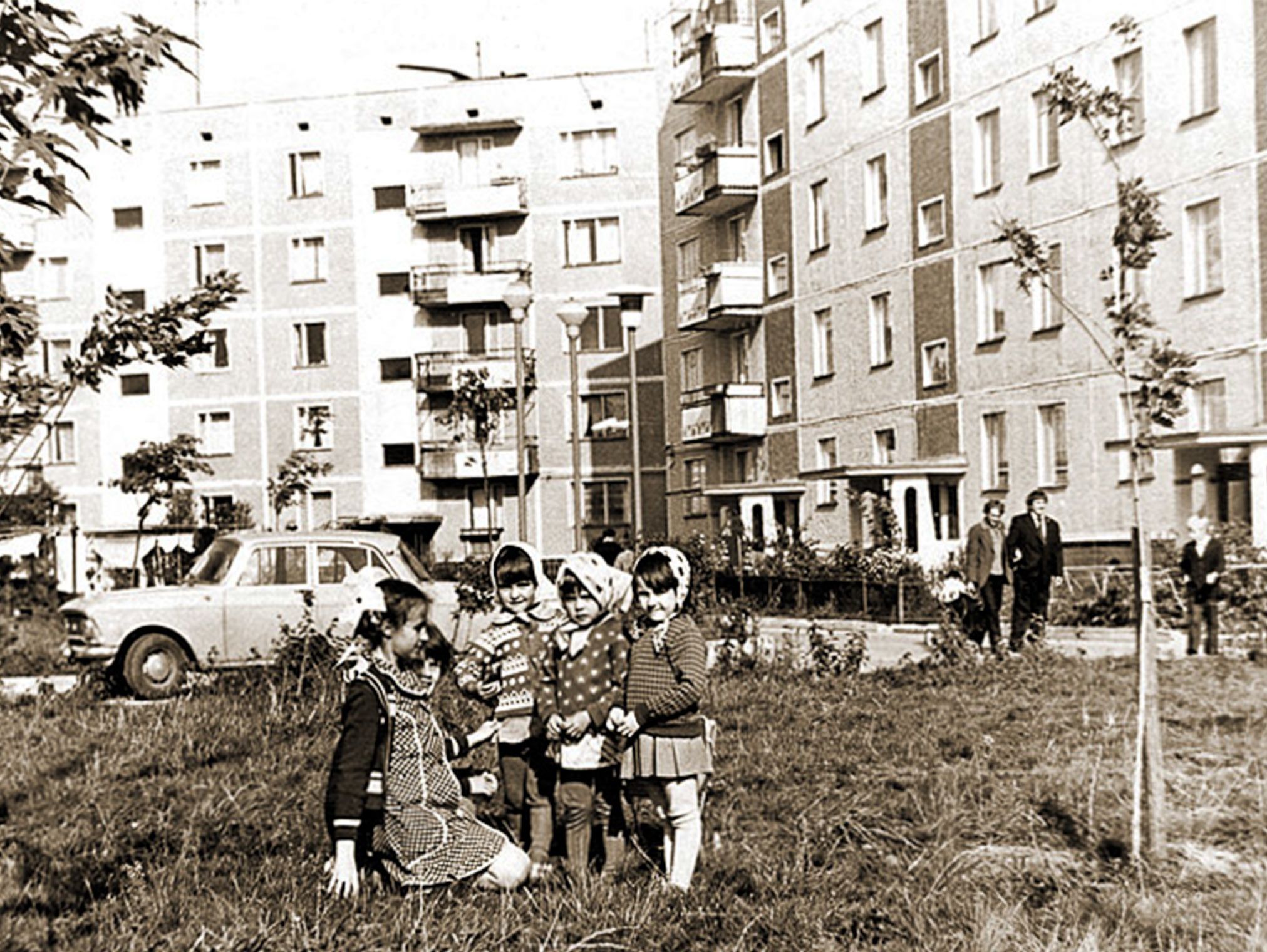
Courtesy ChNPP
Courtesy ChNPP
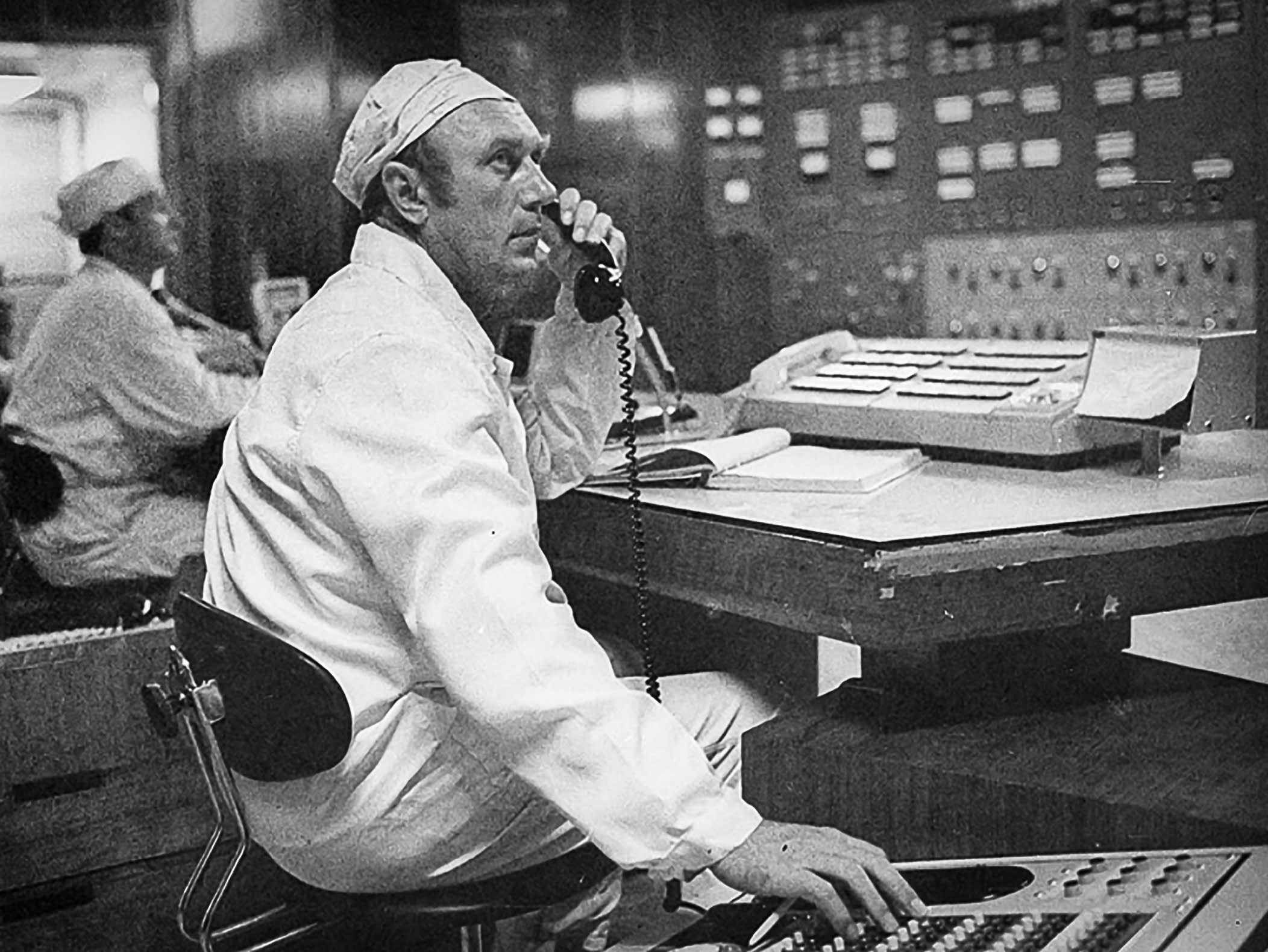
Courtesy ChNPP
Courtesy ChNPP


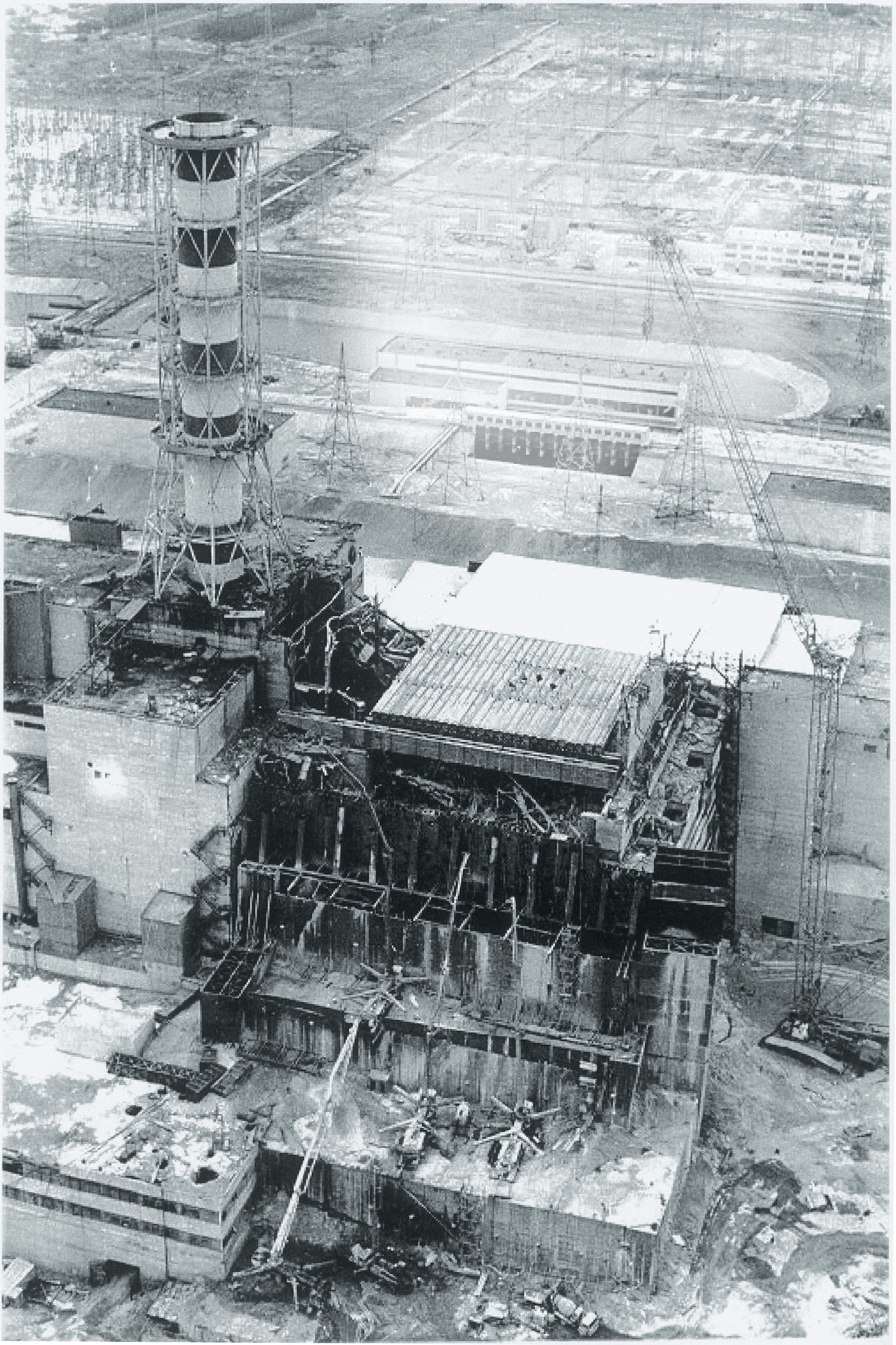

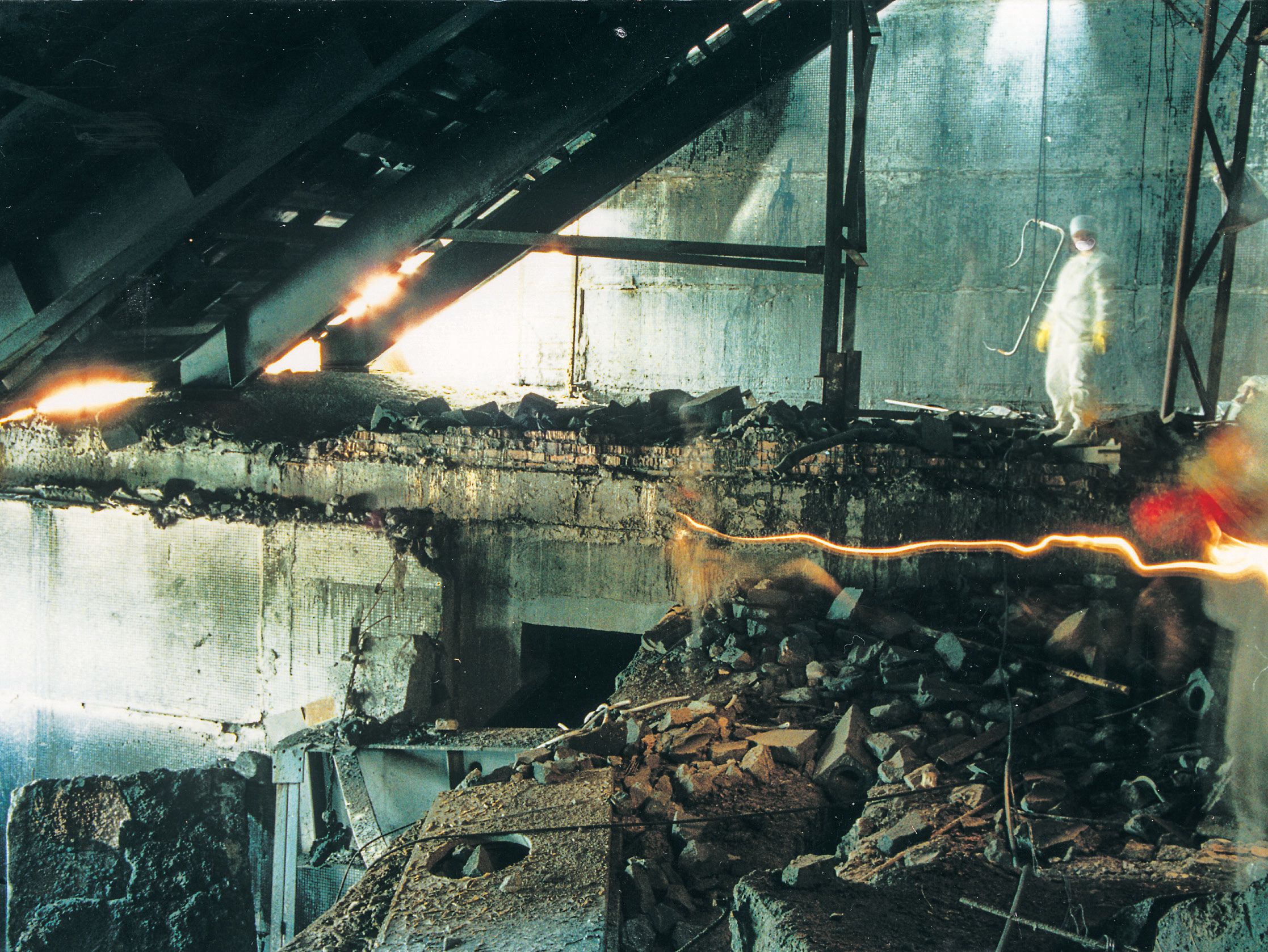
Alexander Kupny
Alexander Kupny
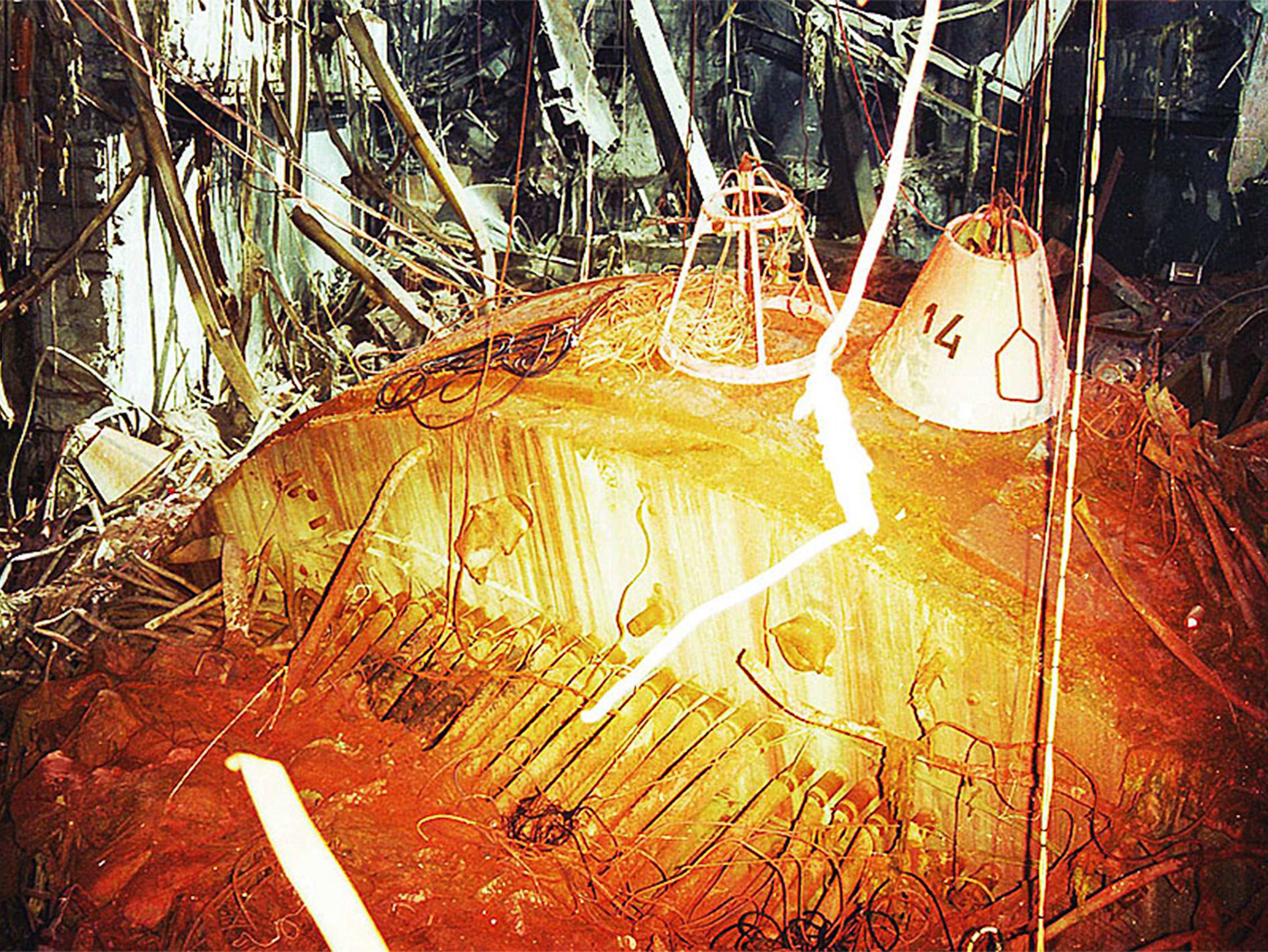
Courtesy ChNPP
Courtesy ChNPP

THE SARCOPHAGUS AND THE CLEAN UP
The Chernobyl accident destroyed the building that had contained reactor 4. At the time of the explosion, it held 192 tonnes of uranium nuclear fuel. According to estimates, less than 5 per cent was released after the explosion. After extinguishing the fire, covering the reactor core became the most important task to avoid the further expulsion of radioactive materials.
Between May and November 1986 a steel and concrete structure – the so-called “sarcophagus” – was built to shut away what remained inside the destroyed reactor building and act as a radiation shield.
Building the shelter on the heavily contaminated site was an unprecedented challenge. Several thousand workers were conscripted and the military provided further reinforcement. Many were exposed to extremely high radiation doses.
The shelter was built using more than 400,000 m³ of concrete and 7,300 tonnes of metal. It contained 740,000 m³ of contaminated debris including the lava-like mixture of molten fuel and the materials dropped into the burning core from the helicopters, as well as highly contaminated dust and radioactive liquids. These materials are still inside today.
But the shelter was never more than an emergency measure. Its estimated design life was 20-30 years at best. There was little breathing space in which to find a long-term solution.
The other crucial task was cleaning up the overall site of the Chernobyl Nuclear Power Plant. Approximately 200,000 “liquidators” from all over the Soviet Union were involved in the initial remedial operation during 1986 and 1987. They received high doses of radiation.
“It was wrong to throw in tens of thousands of people with neither proper equipment nor protection,” says Volodymir Holosha, who for many years was head of the exclusion zone imposed after the accident. “It was the human dimension which turned an accident into a catastrophe.”
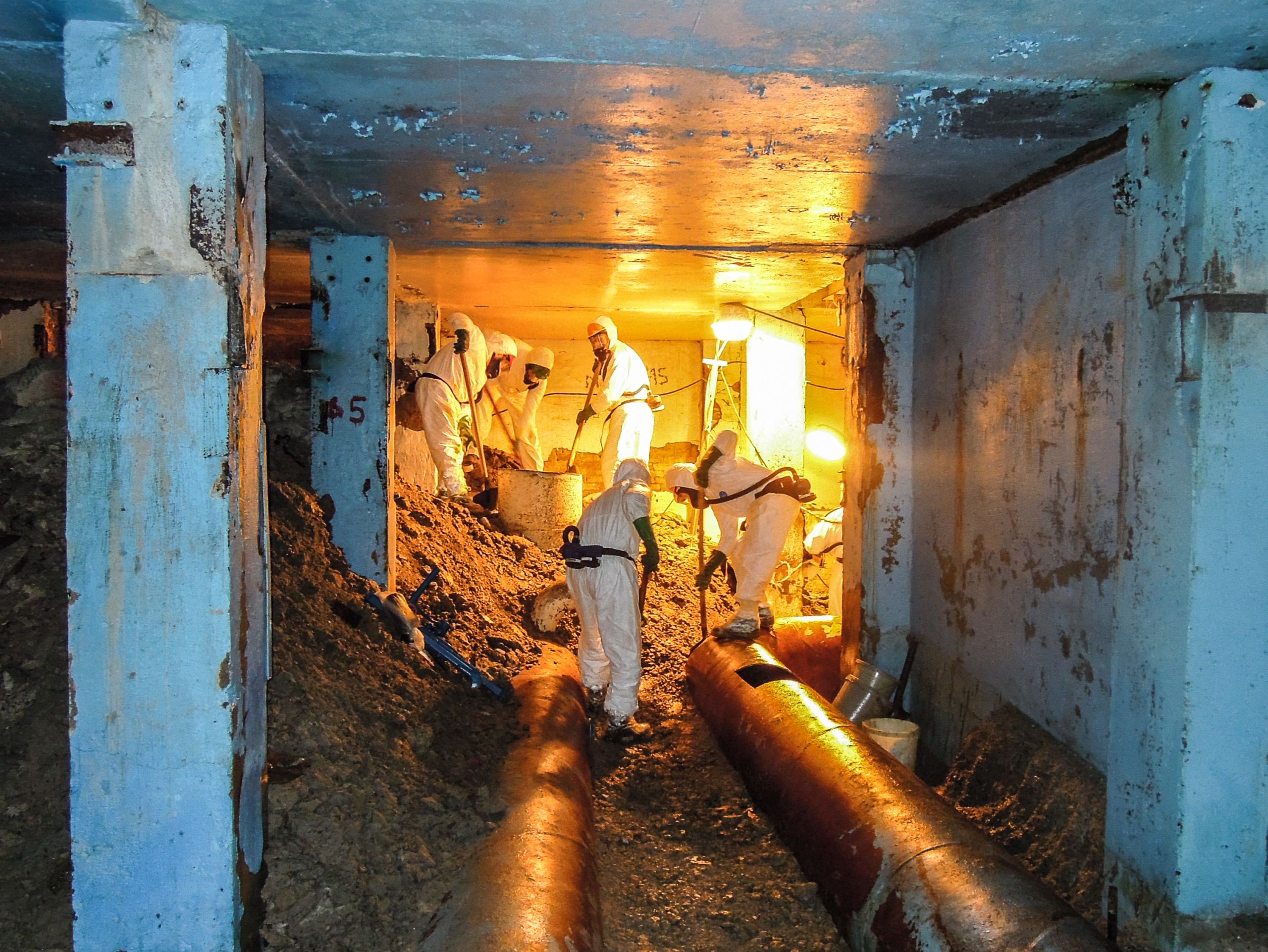
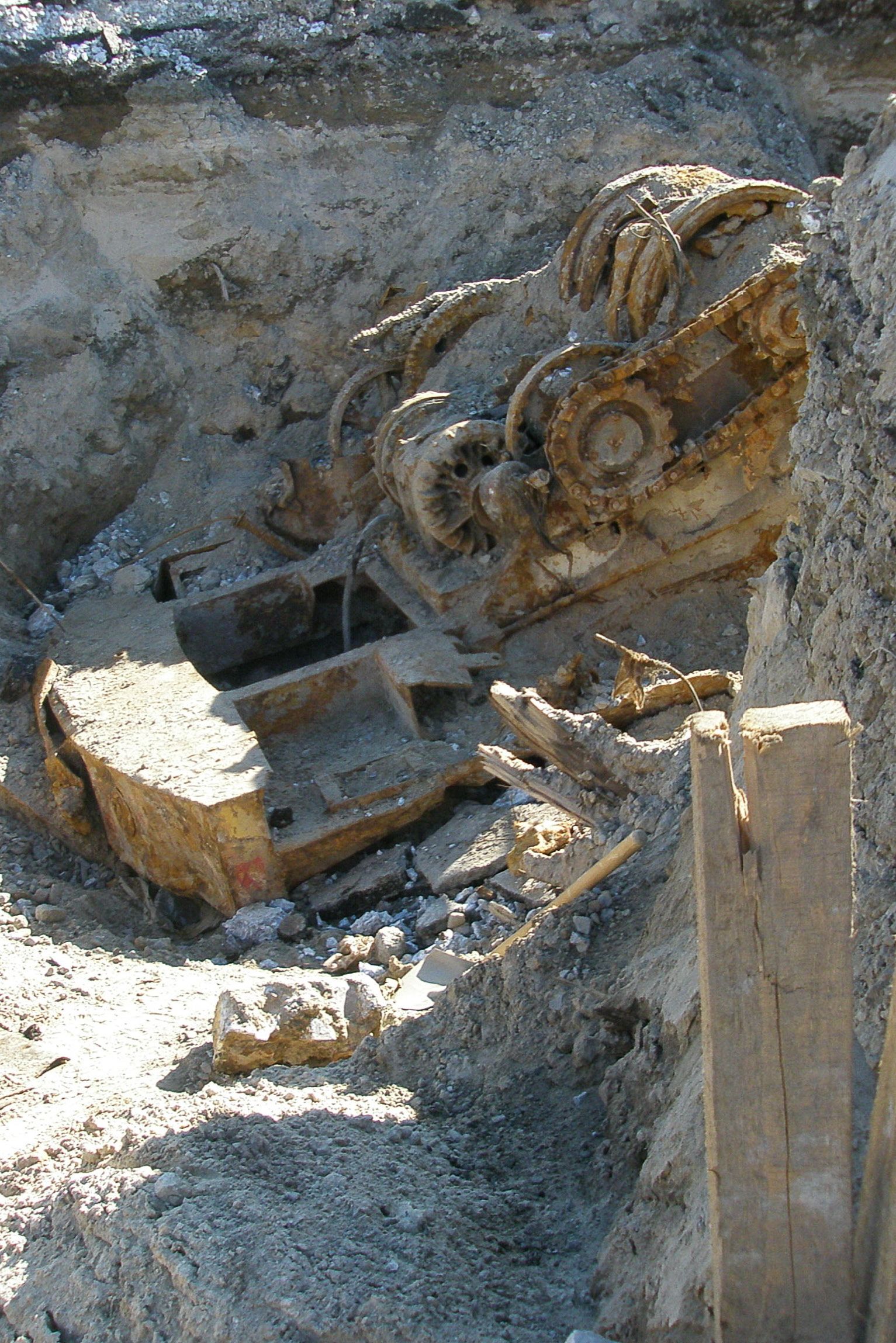
Vigouroux/Novarka
Vigouroux/Novarka
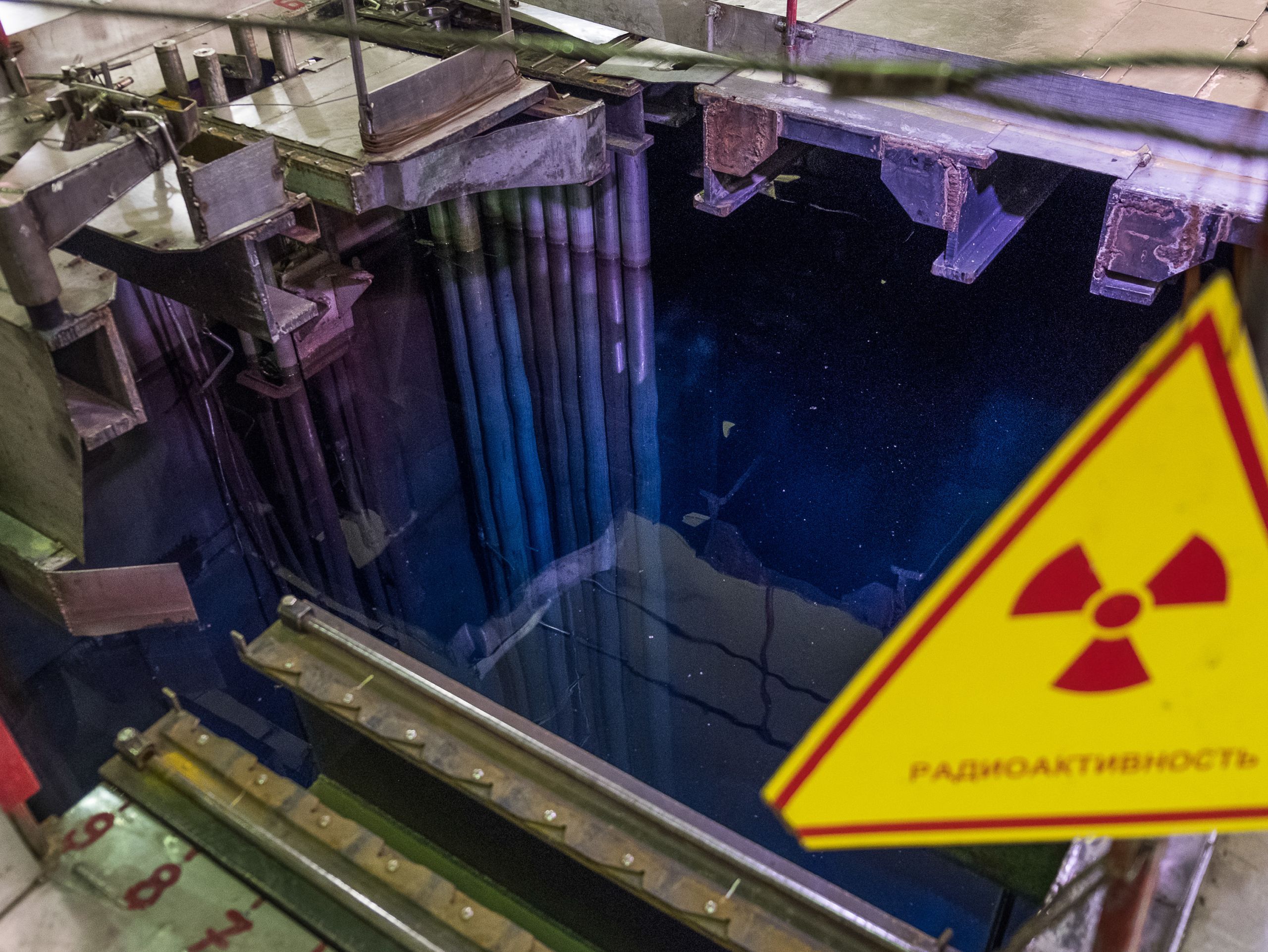
EBRD/CJM Booth
EBRD/CJM Booth
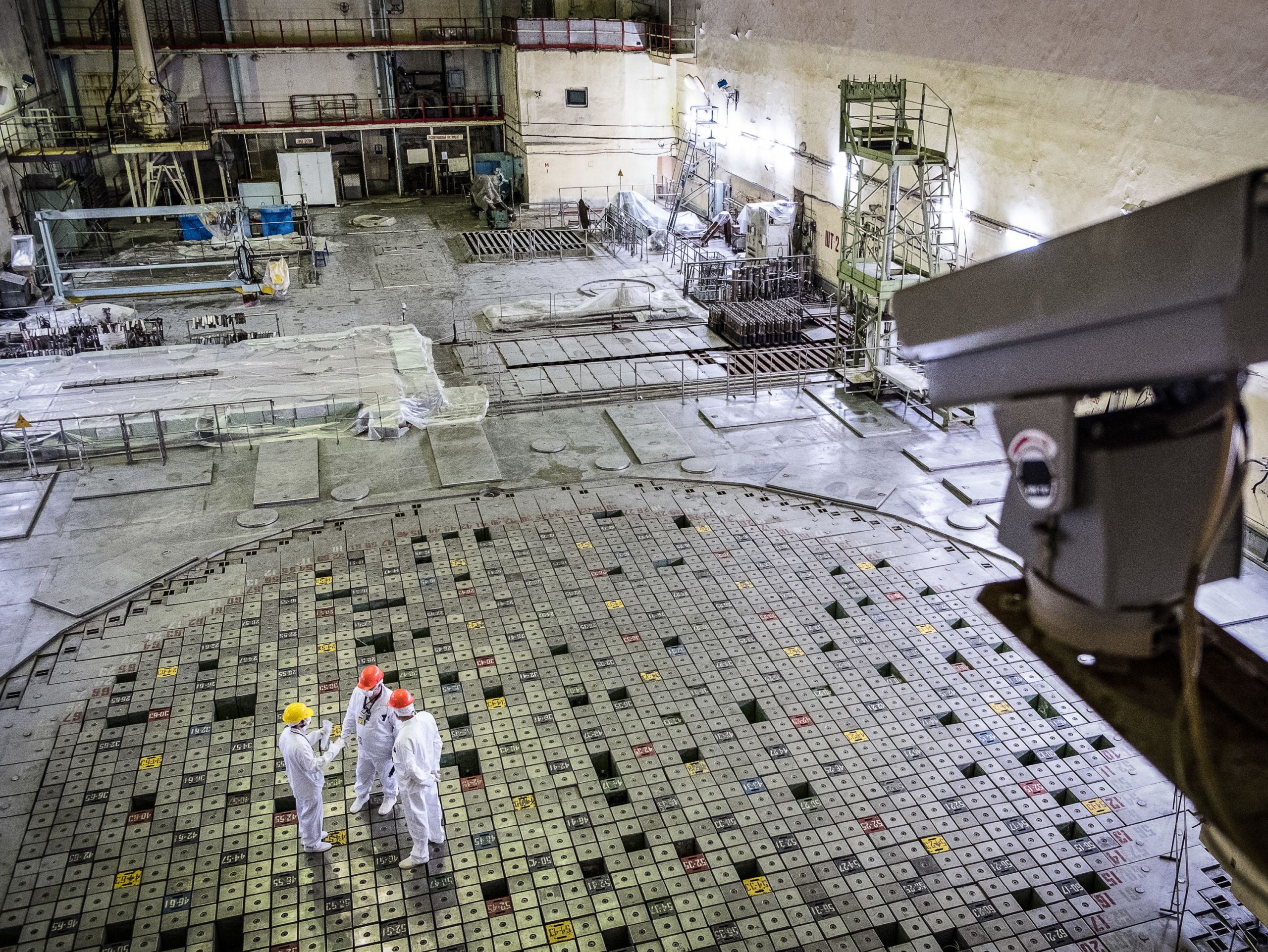
EBRD/CJM Booth
EBRD/CJM Booth
A LONG-TERM SOLUTION
Although the event exposed serious design flaws in the RBMK-1000 reactor model used in Chernobyl, compounded by the lack of an adequate safety culture, the three remaining reactors soon returned to operation after the accident.
Eventually, reactor 2 was shut down in 1991. When the Soviet Union was dissolved and Ukraine became an independent country at the end of the same year, units 1 and 3 continued to produce electricity.
But the accident had raised serious concerns and intensified international cooperation to mitigate the risks associated with Soviet-designed reactors. In February 1993, the G7 initiated the establishment at the EBRD of the Nuclear Safety Account (NSA), a multilateral fund for nuclear safety improvements with first projects in Bulgaria, Lithuania and Russia. In 1996, Chernobyl was added to the programme.
The government in Kiev committed itself to shutting down the operations of the Chernobyl reactors by 2000, while the G7-EU committed to helping Ukraine. The NSA financed the construction of a Liquid Radioactive Waste Treatment Plant to handle 35,000 m³ of low- and intermediate-level radioactive liquid waste.
A much larger project funded by the NSA is the construction of a new Interim Spent Fuel Storage Facility. There are currently 21,217 spent nuclear fuel assemblies from reactors 1,2 and 3, stored in hazardous conditions at a cooling pond which need to be removed, processed and secured. The new facility will be the world’s largest dry storage facility for spent nuclear fuel.
However, the main task was to find a long-term solution for the shelter. Hundreds of proposals had been made since the 1986 accident, but the tasks remained daunting: stabilising the shelter, protecting workers from high radiation levels, preventing the release of contaminated material and creating conditions to allow the orderly deconstruction of the remains of the destroyed reactor and removal of its fuel-containing materials.
The Shelter Implementation Plan, drafted in mid-1997, finally offered a blueprint and in December of the same year the Chernobyl Shelter Fund was established. Emergency repairs in 1998 and 1999 prevented an imminent collapse of the shelter and stabilised the vent stack.
The risk that that radioactive water would leak into the water table of the Dnipro basin or act as moderator to the fuel-containing material and lead to a criticality event was addressed head-on. Creating a new health and safety culture became another priority.
While addressing urgent tasks the search for a long-term solution for the shelter continued. Finally the construction of a lightweight arch was chosen as the preferred option. The New Safe Confinement was born.
At least on paper.
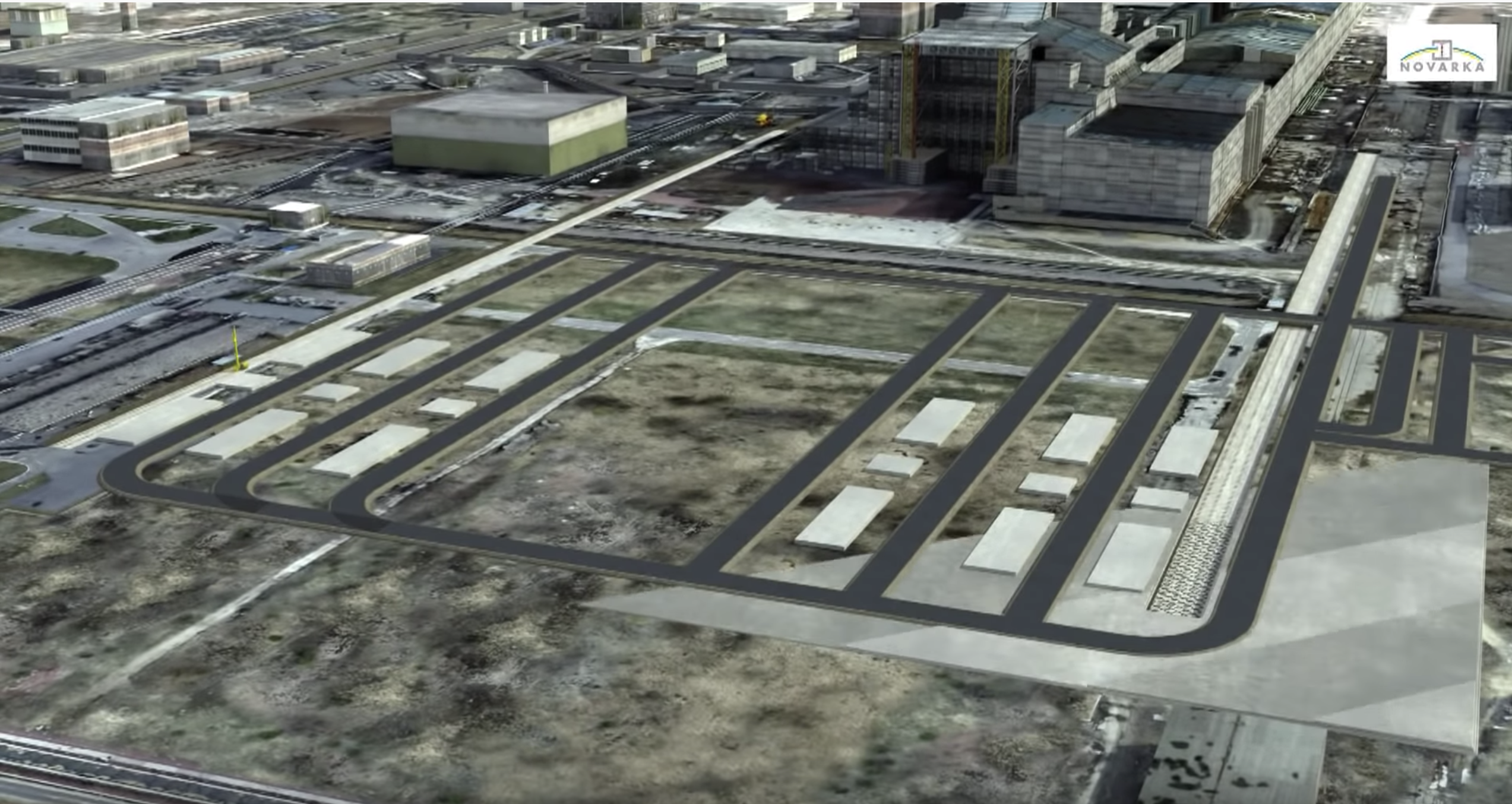
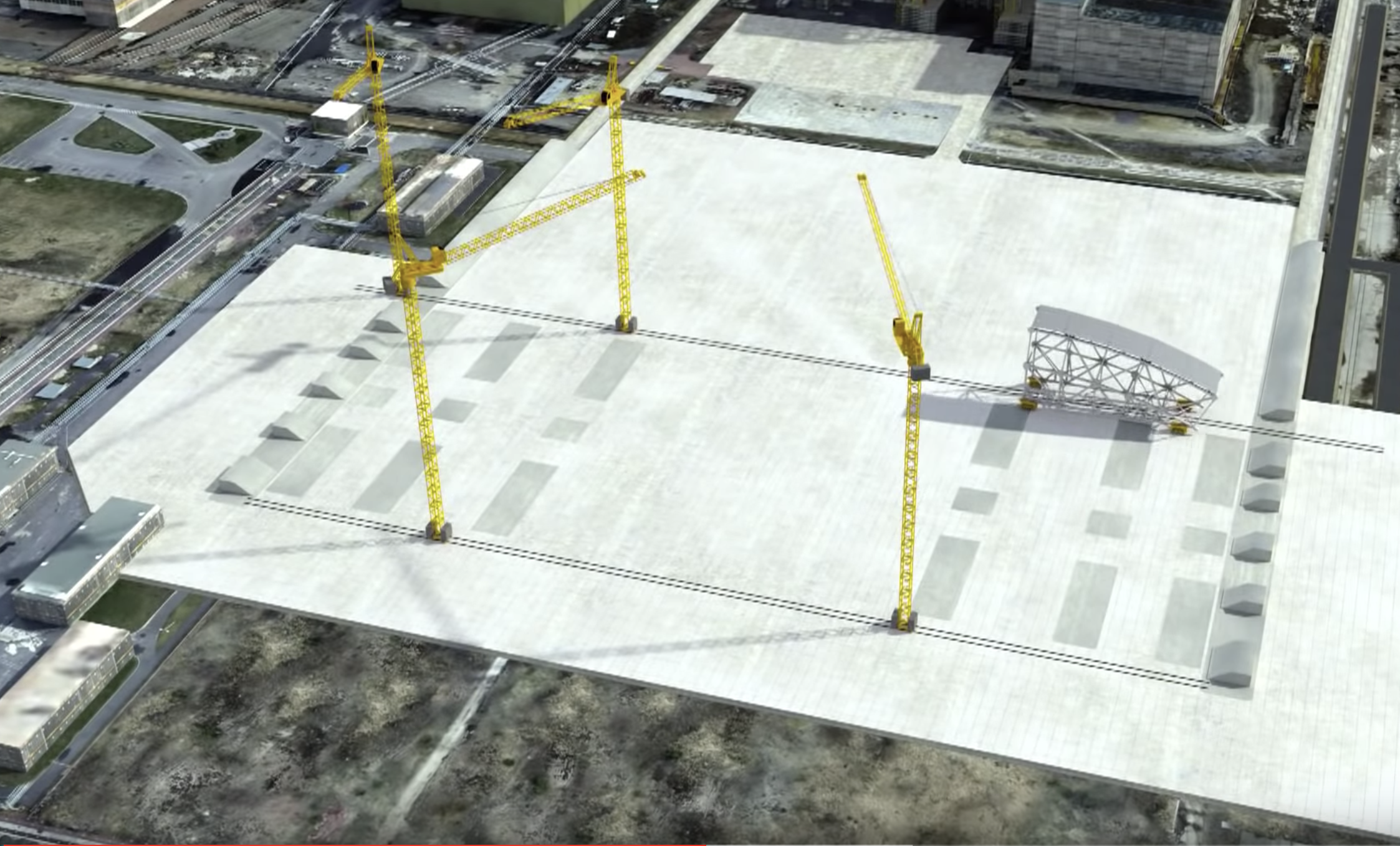
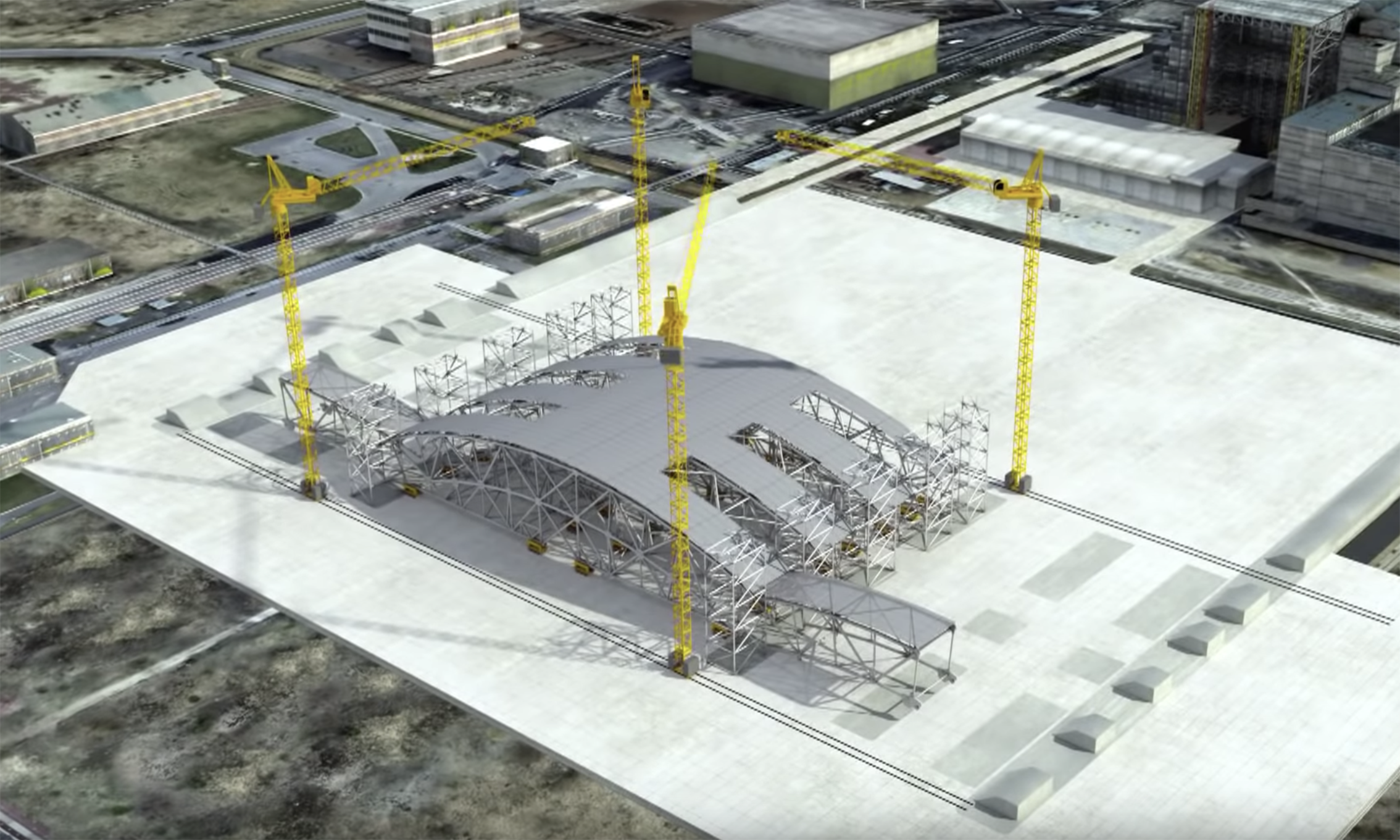
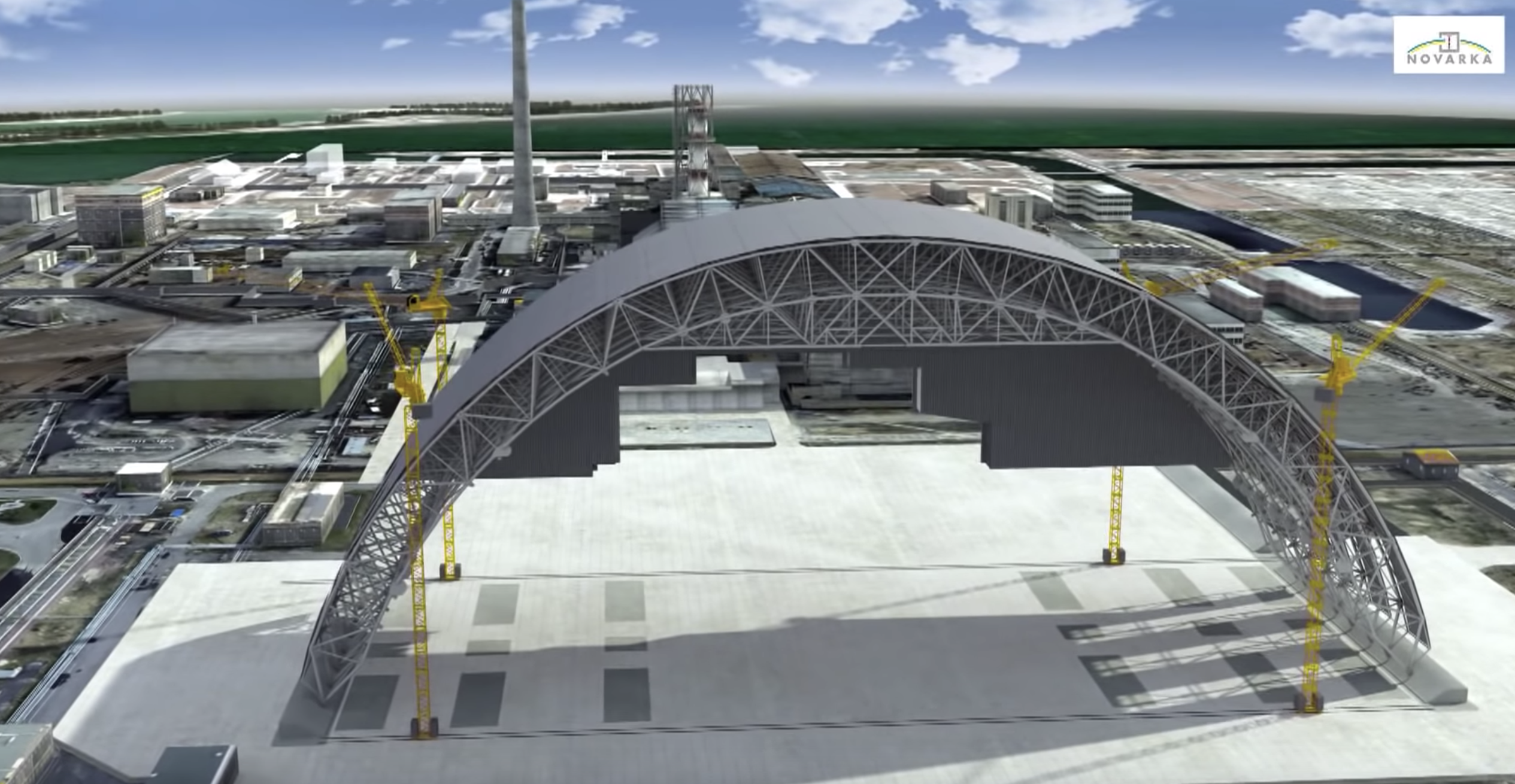
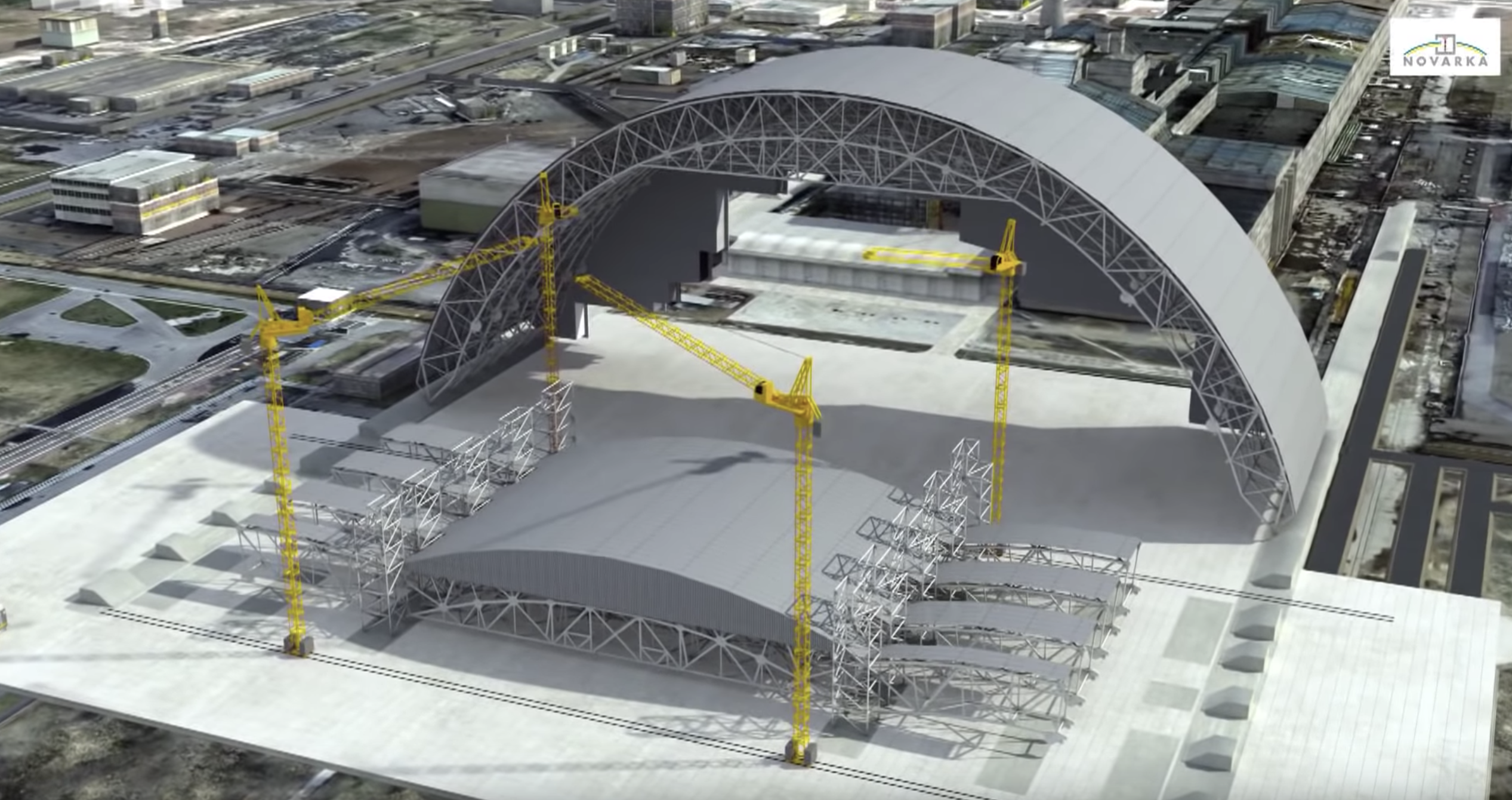
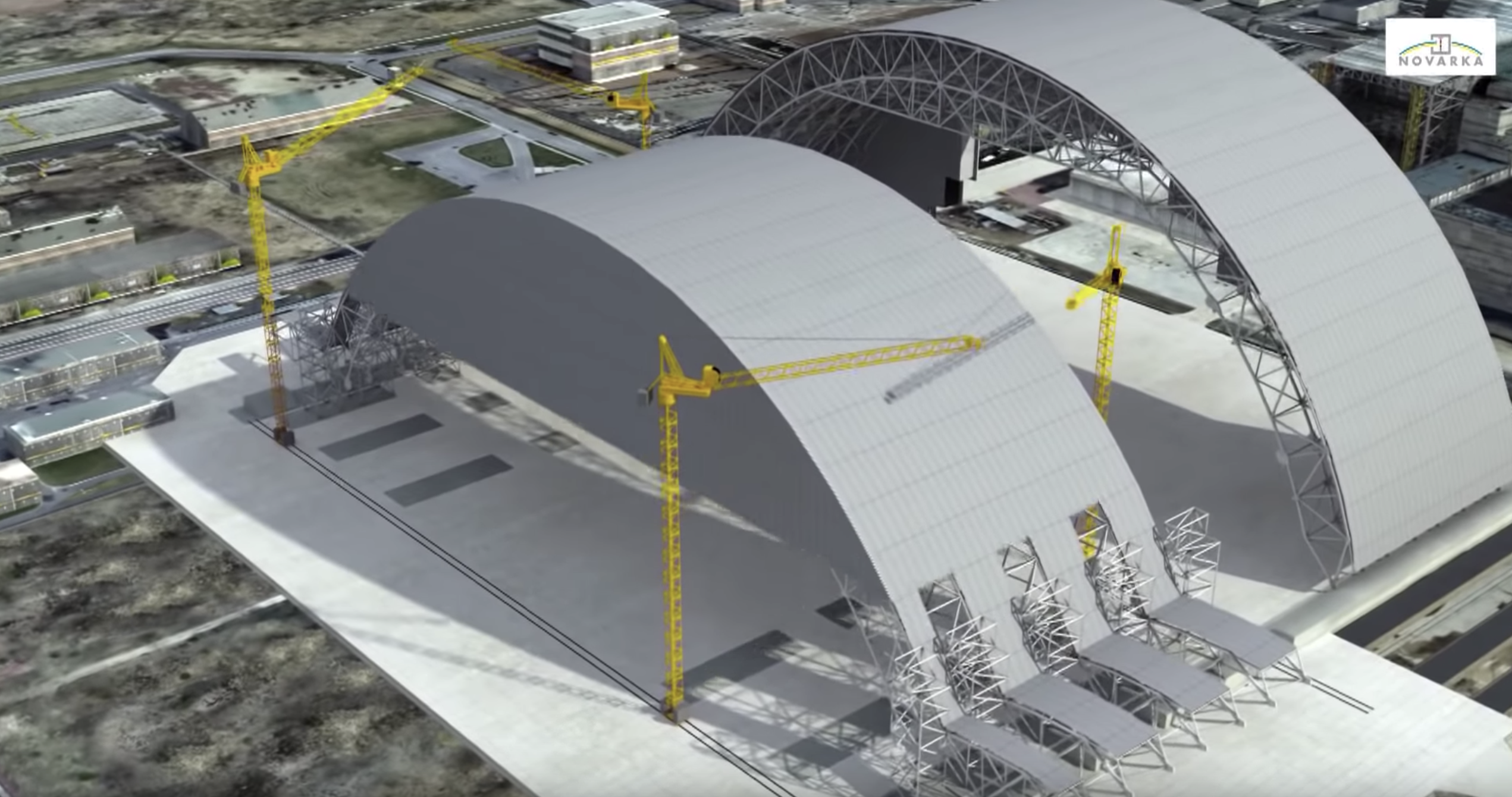
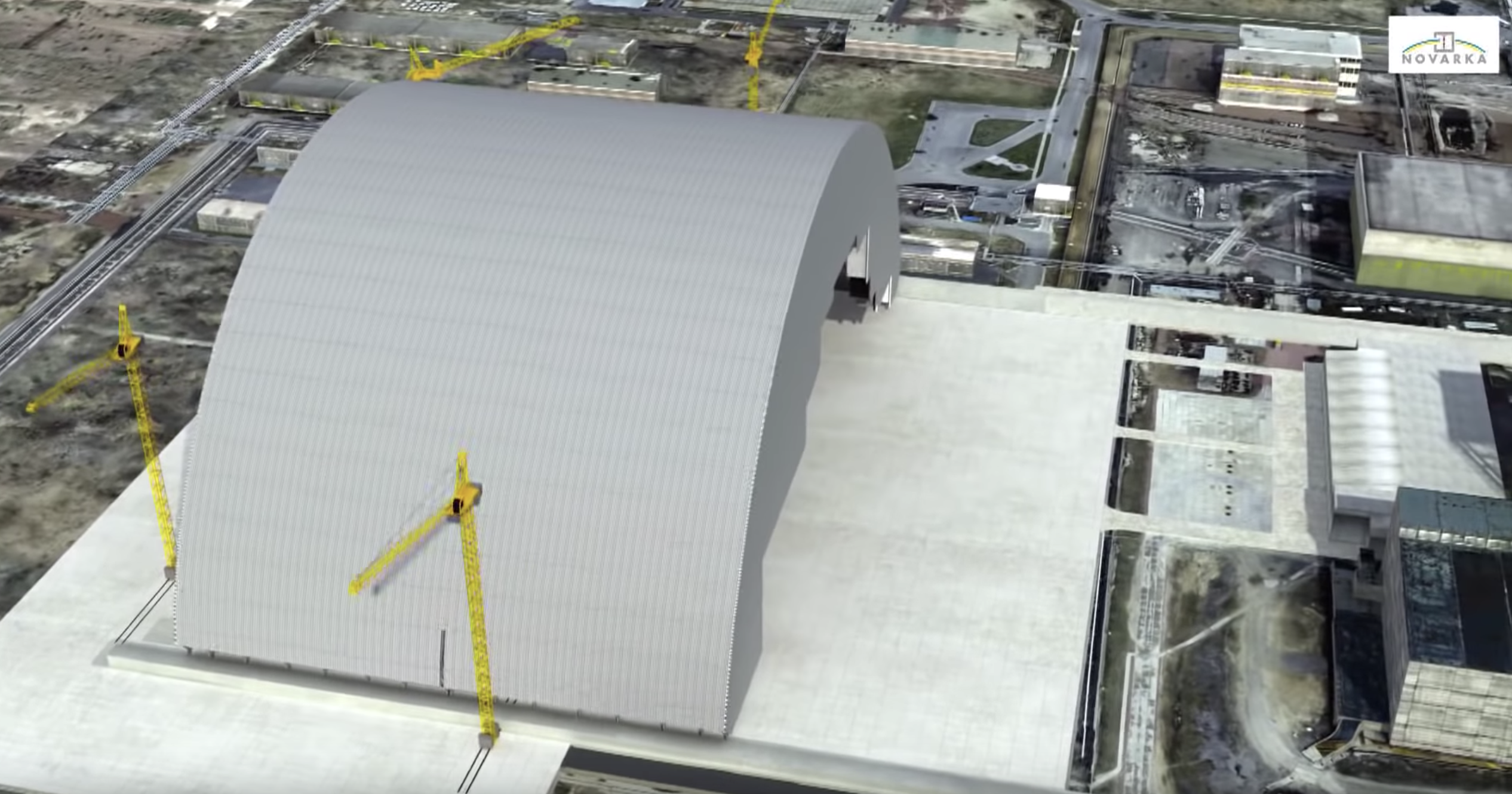
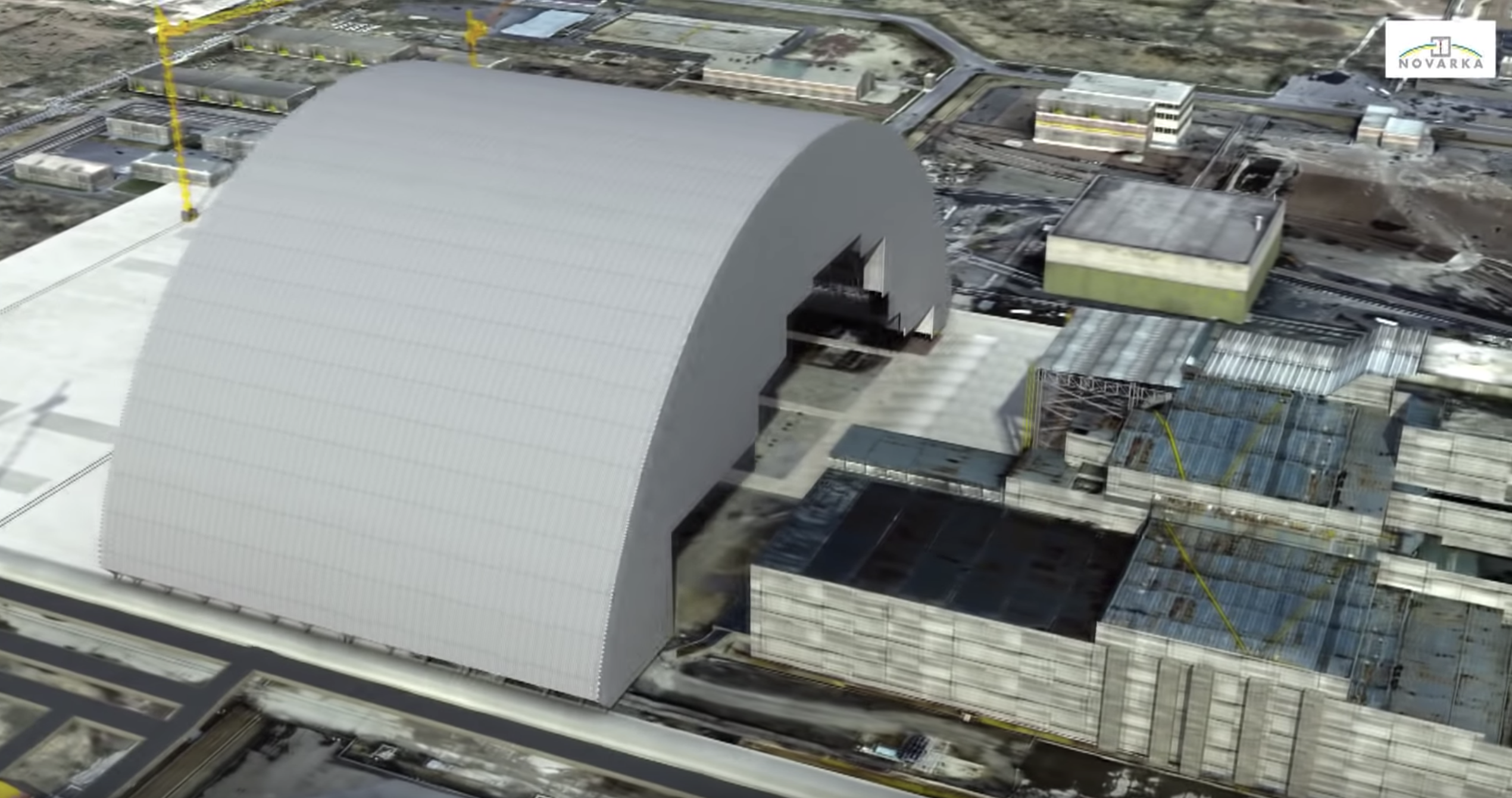
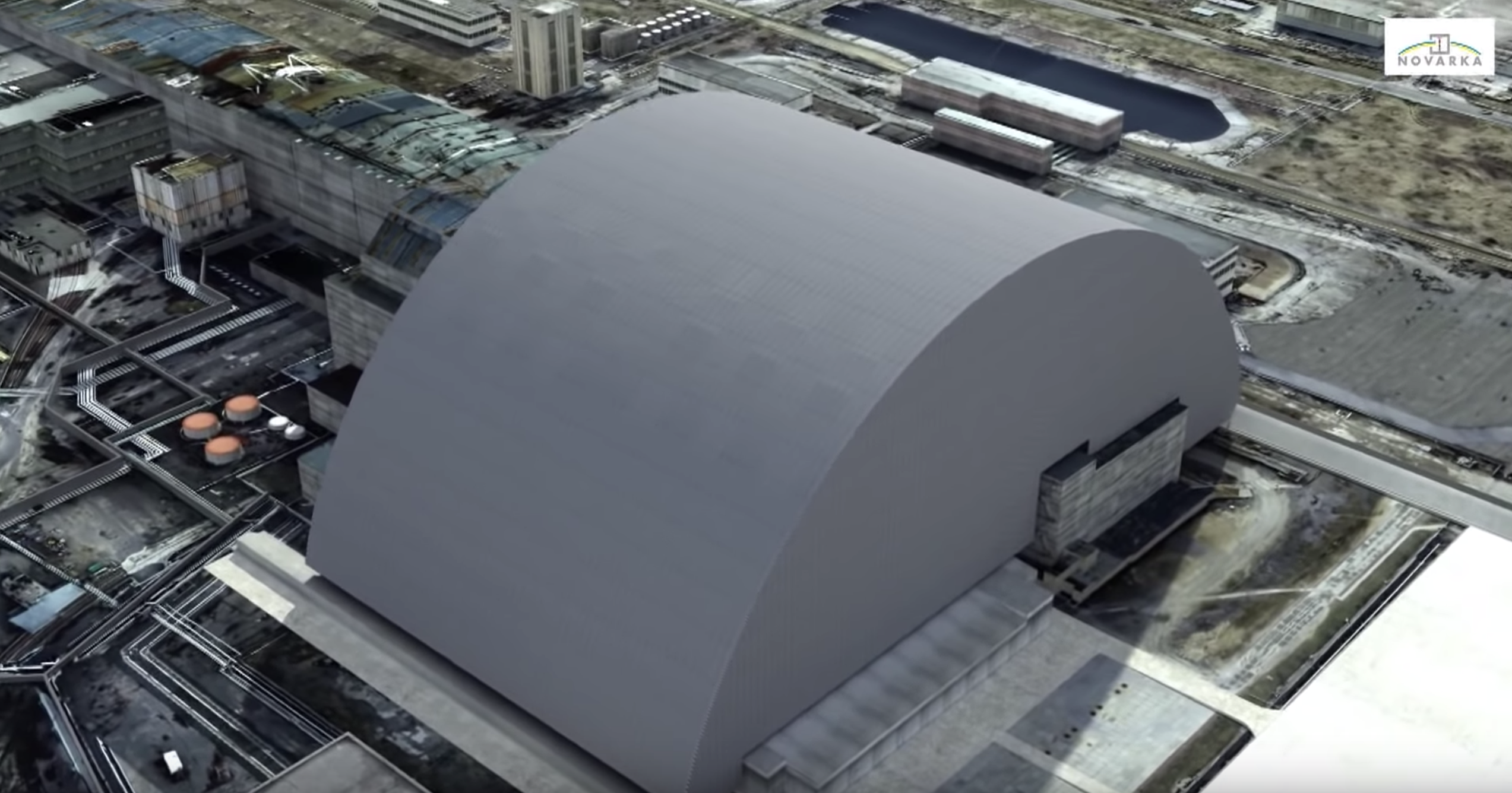
THE NEW SAFE CONFINEMENT
While the construction of the new structure was still years away, urgent measures were needed to avoid a collapse of the existing shelter: Between 2004 and 2008 the roof, the western wall and internal structures were stabilised in pioneering work.
At the same time work on the New Safe Confinement began. The new structured was to cover and shield the site of reactor 4, to be built in segments at a distance from the shelter and then slid in place. The design and a lifespan of 100 years would ensure optimal conditions for the future deconstruction and removal of fuel-containing material at a later stage.
Following the approval by the Ukrainian authorities an international tender was launched. In September 2007 the contract for the design and construction was signed between Chernobyl Nuclear Power Plant and Novarka, a consortium formed by the French companies Vinci Construction Grands Projets and Bouygues Travaux Publics.
Site preparatory work was largely completed in 2011. After the removal of contaminated soil, a “clean area” was established for the construction of the arch which significantly reduced the need for radiation protection measures for workers. The arch assembly work began in April 2012.
It posed special challenges that had to be addressed with tailor-made solutions. Steel constructions need constant corrosion control and normally this is done with fresh layers of special paint. But in the case of the New Safe Confinement, this was not possible because of the high levels of radiation. Instead, a corrosion-resistant lightweight steel wall cladding was applied.
Consisting of multiple layers, the cladding was designed to resist moisture, radiation and heat and even a Class-3 tornado. The space between the external and internal cladding is to be kept at a slight overpressure to minimise the potential for any release of radioactive substances and the humidity will be kept below 40 percent to prevent corrosion.
During peak construction of the New Safe Confinement, 1,200 workers were on site. Not a single incident was recorded exceeding international radiation-dose control limits. The cumulative rate of lost-work incidents was significantly lower than average industrial incident rates.
The New Safe Confinement was built in cooperation with local sub-contractors and suppliers from across the world. Structural elements came from the Italian company Cimolai, cladding was supplied from Turkey by Okyanus Group, and the main crane system was developed by the US company PaR.
The lifting of the New Safe Confinement and its subsequent sliding in November 2016 were managed by the Dutch specialist company Mammoet. In two weeks the entire 36,000-tonne structure was pushed 327 metres into position, covering the reactor building. The sliding was achieved using a skidding system that consisted of 224 hydraulic jacks, nudging the arch 60 cm with each stroke. It was an unprecedented operation.
Today, the New Safe Confinement is the largest moveable land-based structure ever built. Sixteen enormous steel trusses run from one side to the other. Held together by over 500,000 custom-made bolts, this structure forms the backbone to which the cladding, cranes and other dismantling equipment are attached. It is 108 metres high and 162 metres long. It has a span of 257 metres and a lifetime of a minimum of 100 years.
The overall cost of the structure is €1.5 billion. 45 governments, plus the EBRD contribution of €498 million from the Bank’s own resources, have provided the finance to secure the Chernobyl site. The cost is substantial. But not resolving the issue would cost incomparably more.
The projects offer a long-term answer to the challenge of making the Chernobyl site environmentally safe. Their finalisation marks an end to more than 30 years of intensive and complex work in the most challenging circumstances. Now the next phase of overcoming the legacy of the Chernobyl accident can begin.
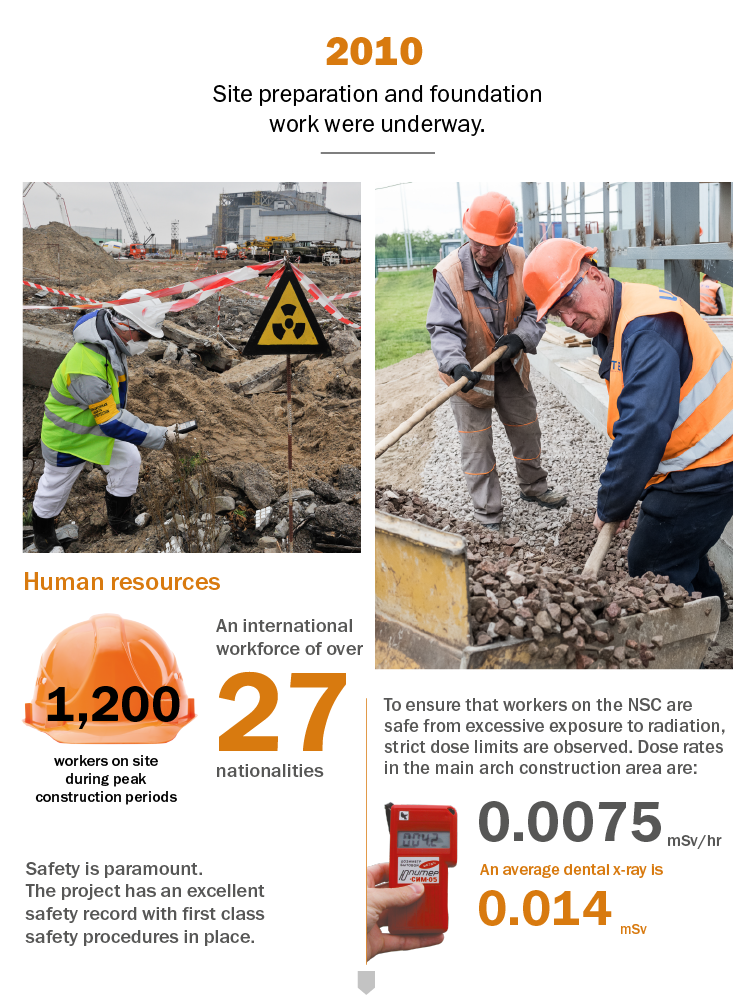
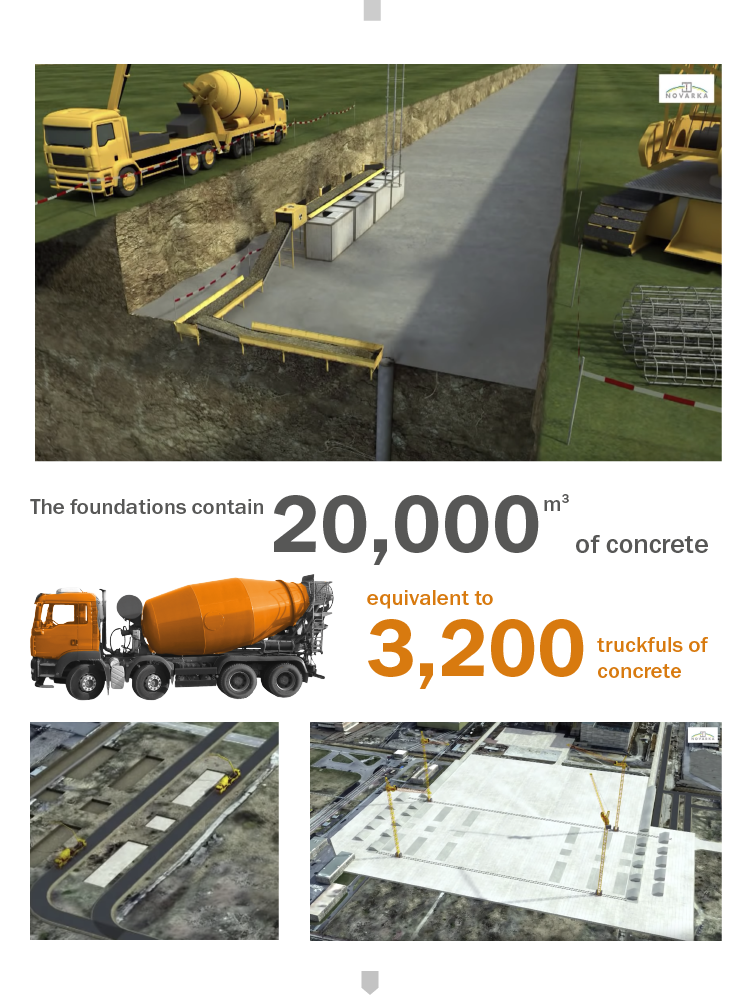
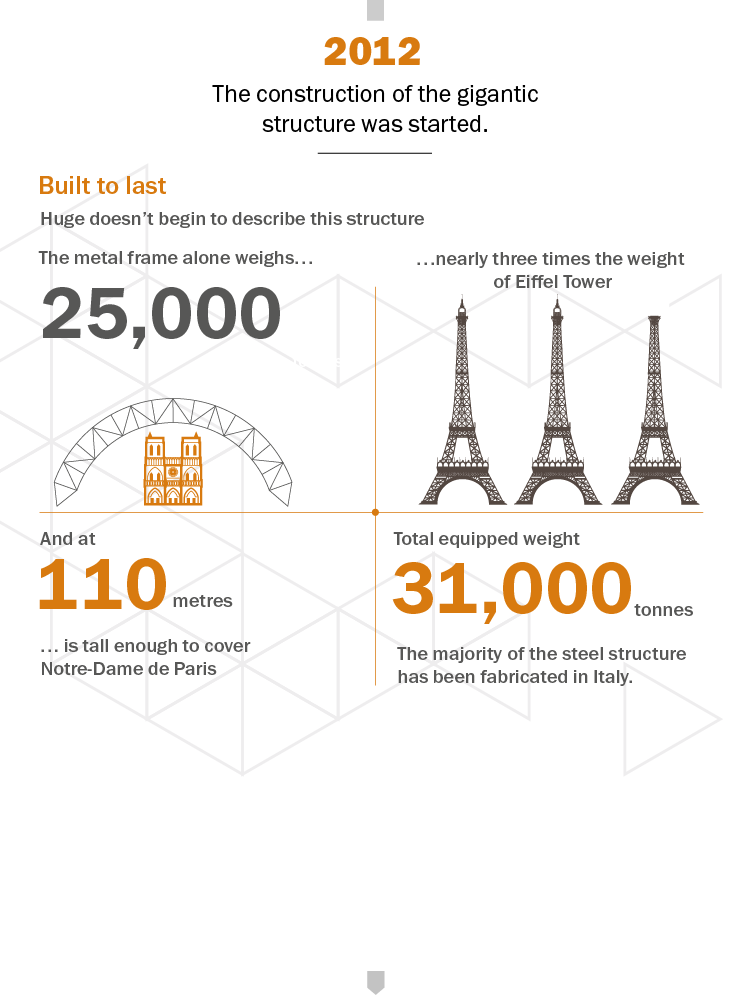
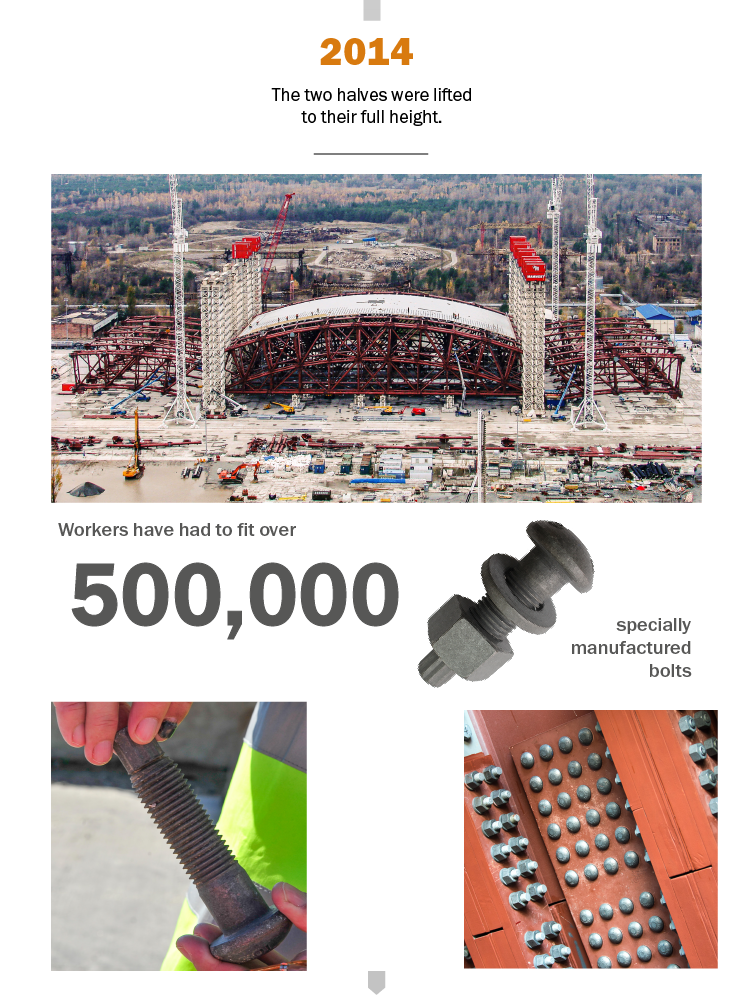
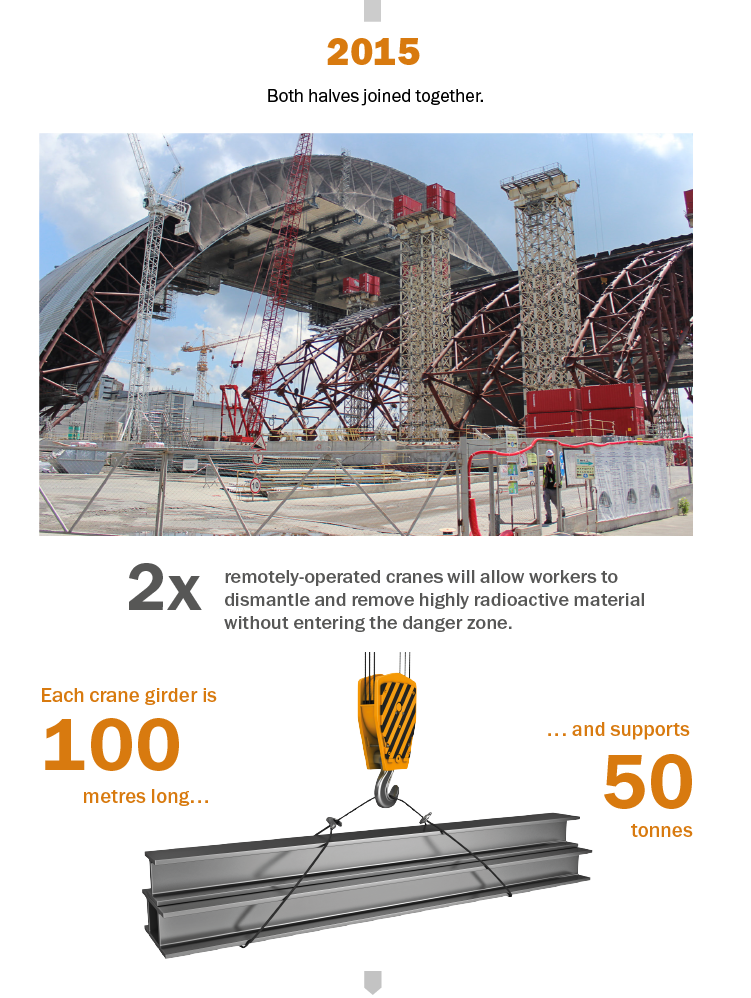
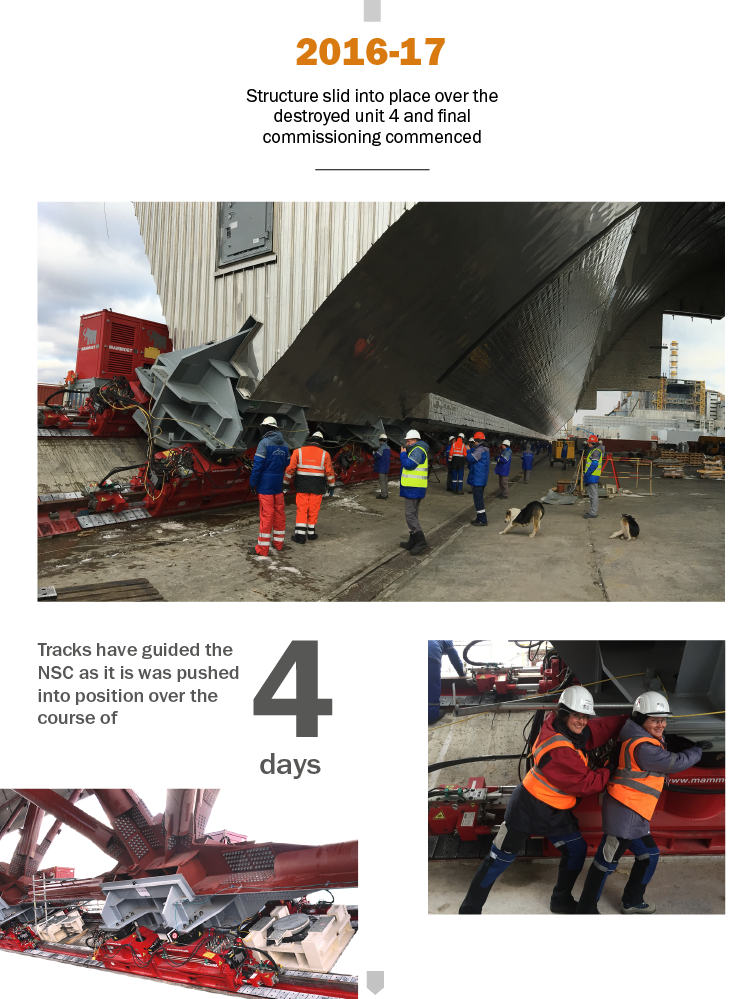
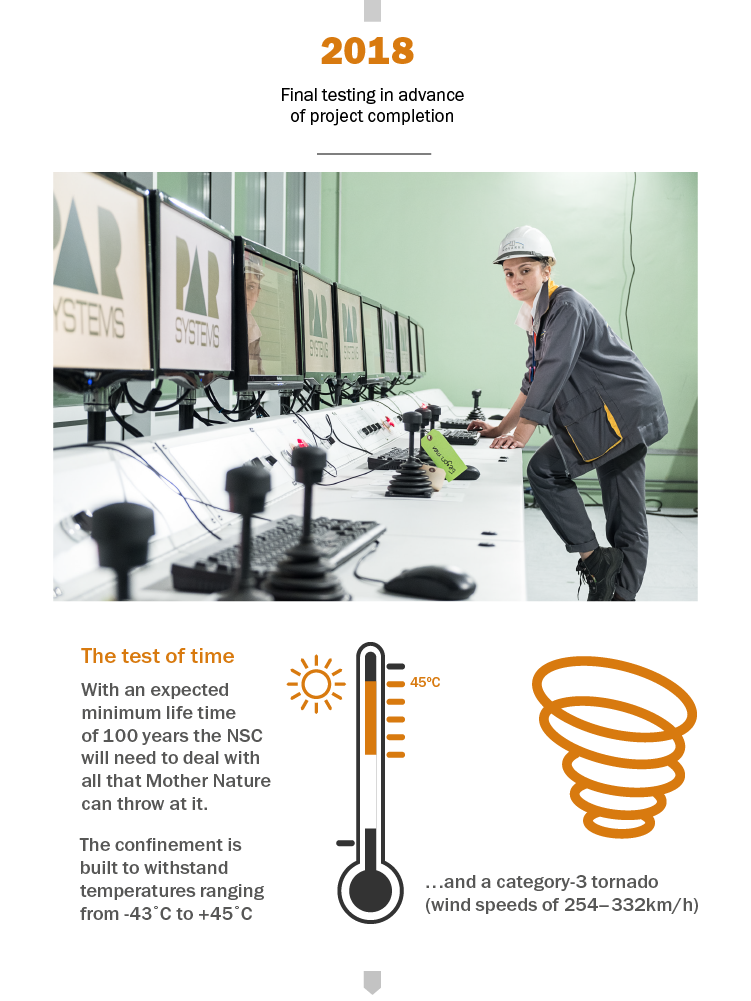
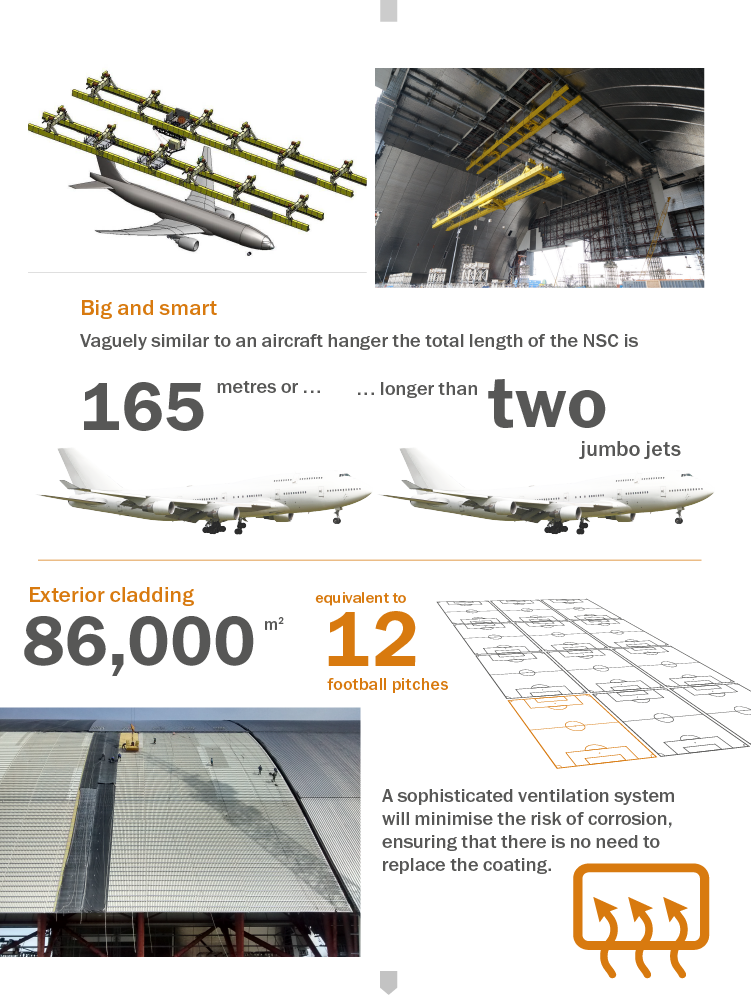

The EBRD and Nuclear Safety
Established in 1993, the EBRD Nuclear Safety Department today manages seven donor supported funds financing nuclear safety and security in countries where the Bank operates. A key task of this Department is the decommissioning of Soviet-era nuclear facilities and equipment.
The seven funds are:
Chernobyl Shelter Fund
Nuclear Safety Account
Bohunice International Decommissioning Support Fund
Ignalina International Decommissioning Support Fund
Kozloduy International Decommissioning Support Fund
Northern Dimension Environmental Programme – Nuclear Window
Environmental Remediation Account for Central Asia
To date, 45 donors have contributed to the nuclear decommissioning effort with more than €4 billion in total. The latest fund is the Environmental Remediation Account for Central Asia which deals with the legacy of uranium mining.
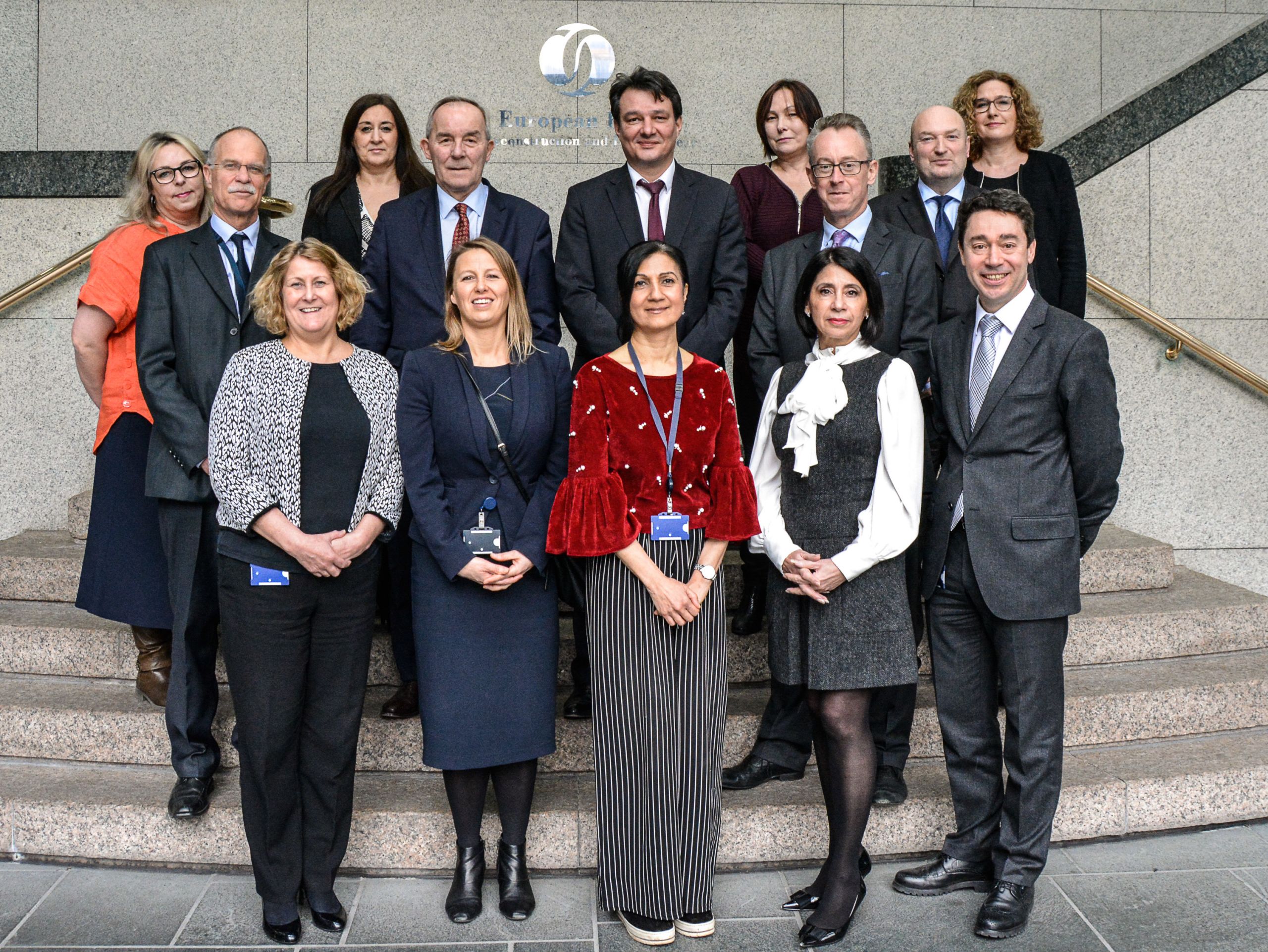
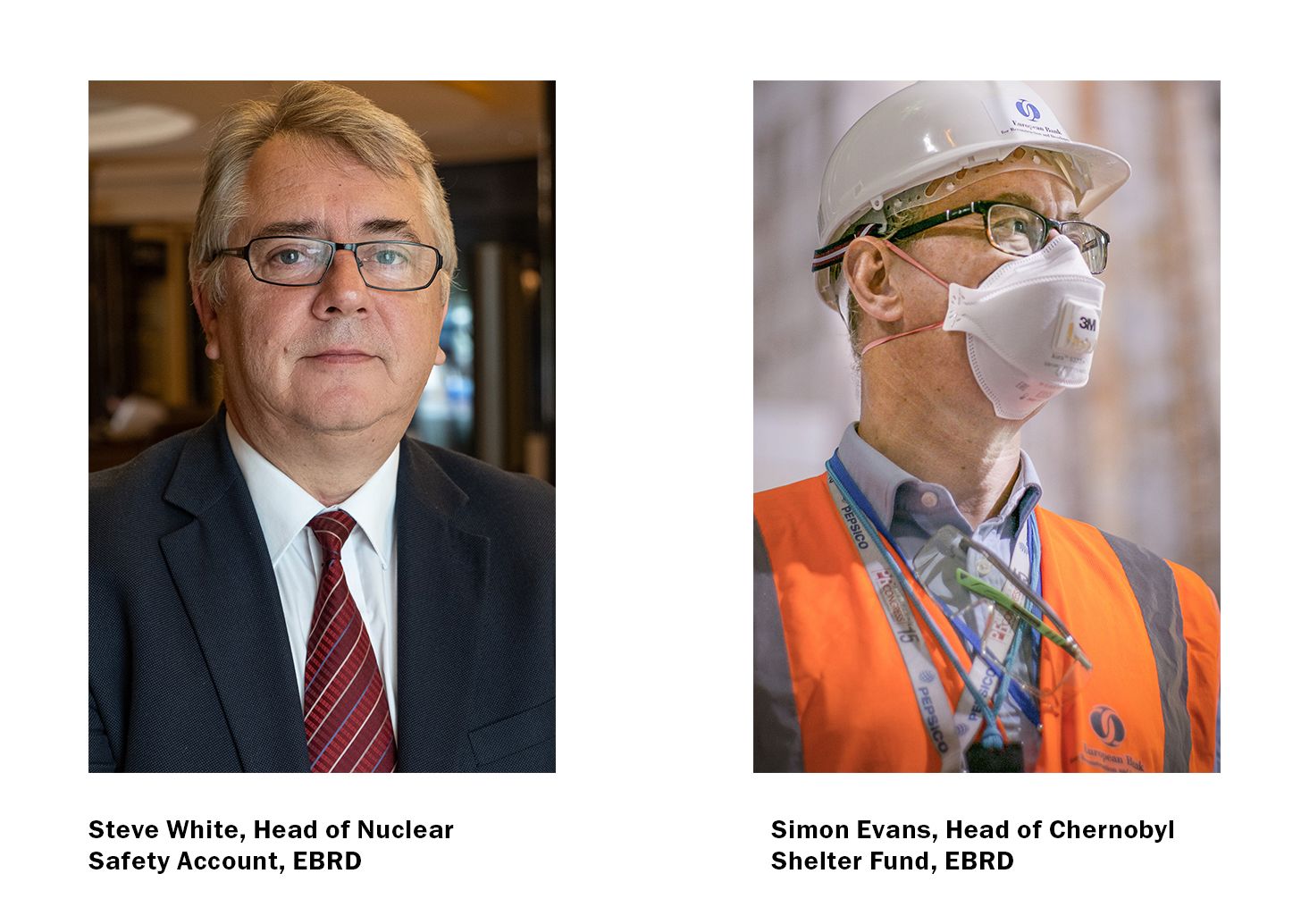
Supported by 45 donors and the EBRD,
and costing in excess of €2.5 billion, the EBRD-led projects at the Chernobyl Nuclear Power Plant represent the largest-ever international collaboration on nuclear safety. Thanks to this long-standing commitment from donors, the Chernobyl site can, for the first time since the accident, address the challenges of the future in a safe and secure environment.

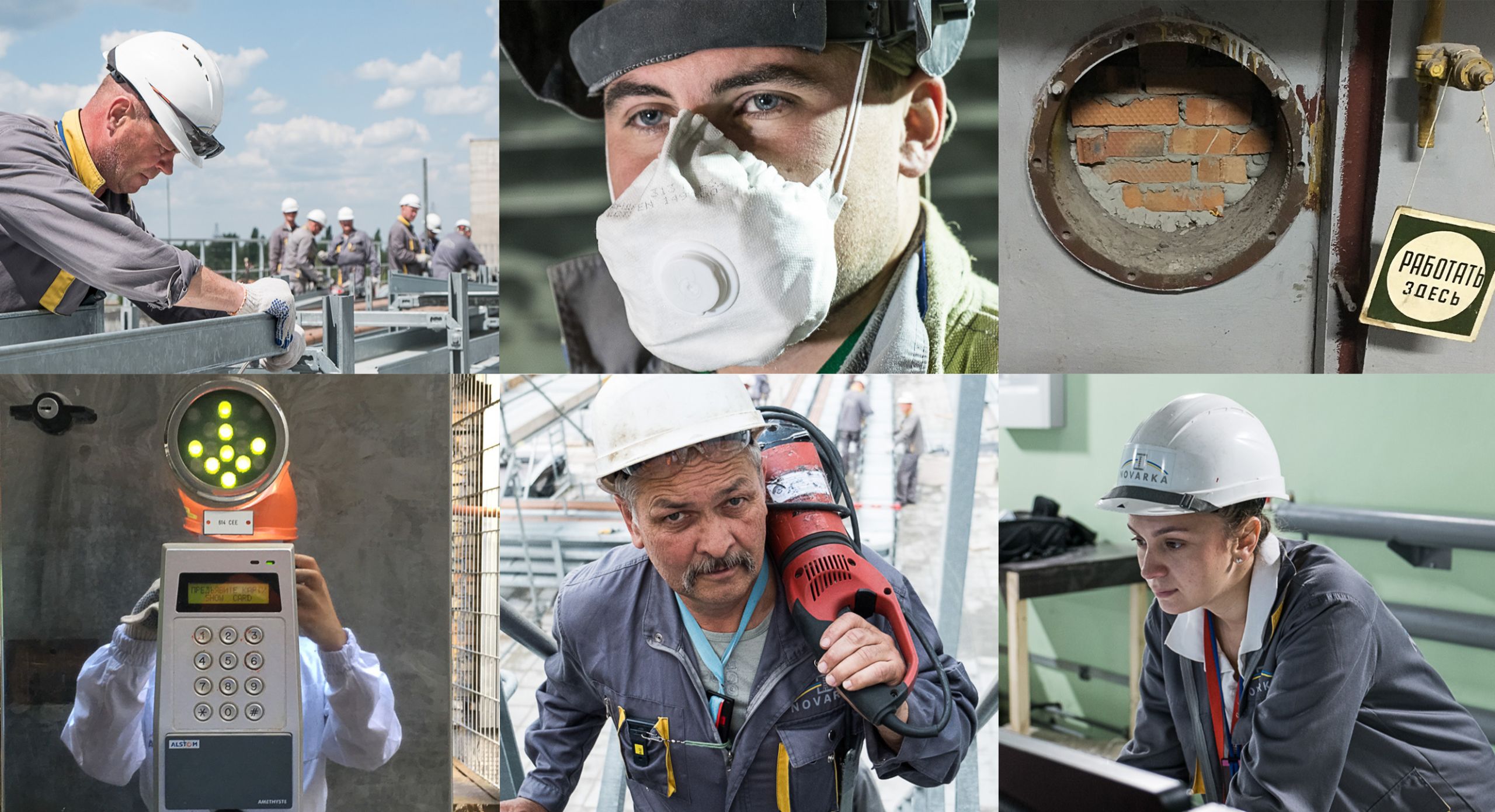
Every effort has been made to trace the copyright holders and obtain permission to reproduce this material. Please do get in touch with any enquiries or any information relating to this image or the rights holder. photos@ebrd.com

